
Want to create or adapt books like this? Learn more about how Pressbooks supports open publishing practices.

2 The History of Special Education

Aligned Standards
CEC Initial Preparation
6.1 6.2 6.5
DEC Preparation
It is important to have a historical knowledge of public education in the United States to understand the evolution of special education, especially since the federal law for special education was passed in 1975, while education existed in the United States since the late 1700s. There are philosophical and social foundational underpinnings that contribute to the creation of a special education law. The resources below provide opportunities to consider and discuss these underpinnings.
The 9 minute video, Celebrating 45 Years of IDEA, provides a brief historical overview of special education .
A series of 6 vimeos titled, School: The Story of American Public Education, by Brian Schoonover discuss the development of American Education from 1770-1950. This series provides an understanding of the historical, philosophical, and sociological foundations underlying the role, development, and organization of public education in the United States. As the videos are viewed, be alert for any discussion of students with disabilities. These vimeos are each 10 minutes in length and were produced by Films for the Humanities and Science. Use The Story of American Public Education Discussion Questions [PDF] to facilitate discussion as the vimeos are watched.
School: The Story of American Public Education (Part 1 of 6)
School: The Story of American Public Education (Part 2 of 6)
School: The Story of American Public Education (Part 3 of 6)
School: The Story of American Public Education (Part 4 of 6)
School: The Story of American Public Education (Part 5 of 6)
School: The Story of American Public Education (Part 6 of 6)

Prior to the passage of Public Law 94-142 The Education of All Handicapped Children Act (EHA) [1] [PDF] in 1975, many individuals with disabilities were barred from public schools, and were cared for through state institutions but were not educated. In the 1950s, attention was given to individuals with disabilities, primarily due to strong advocacy of family-based associations. Changes began to occur through governmental legislation and litigation. A few seminal court cases that ultimately contributed to the federal special education law (EHA) included:
- Brown vs. Board of Education in 1954 that ruled separate schools were not equal
- Pennsylvania Association for Retarded Citizens (PARC) vs. Commonwealth of Pennsylvania In 1971, PARC (currently referred to as the ARC of Pennsylvania), initiated a lawsuit with the Commonwealth of Pennsylvania. PARC, a non-profit organization, represented 13 families of individuals with intellectual disabilities (ID). At the time, Pennsylvania had the authority to deny a free education to individuals with intellectual disabilities. The case was settled in 1972 by the United States District Court for the Eastern District of Pennsylvania. As a result, Pennsylvania consented to provide a free public education for individuals with mental retardation (now referred to as intellectual disabilities). This was the first major legislation to provide equality to individuals with disabilities.
- Mills vs. Board of Education of the District of Columbia This was a civil action suit in 1972 on behalf of seven school-aged individuals who were excluded from DC Public Schools and labeled as behavior problems, mentally retarded, or emotionally disturbed. The ruling was that individuals with disabilities could not be denied a free public education due to lack of funding.
There was also federal legislation beginning in 1959 that led a focus on supporting and educating individuals with disabilities and ensuring there was trained personnel to do so. A History of the Individuals with Disabilities Education Act created by the U.S. Department of Education provides a brief summary of legislation and litigation that supports individuals with disabilities. Additional legislation and litigation are identified in the subsequent chapters related to specific special education law principles.
Forty-five years of the Individuals with Disabilities Education Act was celebrated in 2020 and several resources were created that included:
- Fast Facts of IDEA
- Stories from advocates, professionals, and families
In the United States, laws can be reauthorized that includes a process of updating the law. The EHA was reauthorized or amended multiple times. The list below identifies a few key updates to the law:
- In 1986, Public Law 99-457 [PDF] reauthorized EHA to expand the age range of individuals with disabilities who could receive special education services if found eligible. The age range now included birth to three year old children with services to the family. This is when Early Intervention and the use of IFSP was mandated.
- In 1990, Public Law 102-119 reauthorized EHA and added two categories of disabilities: traumatic brain injury and autism; and required development of a transition plan to support individuals with disabilities transition from school upon graduation or aging-out of special education services at age 21. Since this was also the year the Americans with Disabilities Act was passed, the title of the law was changed to use person-first language and is now known as the Individuals with Disabilities Education Act (IDEA).
- improved outcomes for individuals with disabilities,
- access to the general curriculum as appropriate and determined by the IEP team,
- use of the “developmental delay” label for children through age 9 years,
- specific language around discipline and not denying special education services,
- transition planning for families of toddlers with disabilities who are about to enter preschool, and
- mediation as a process to resolves disputes between families and schools rather than automatically engaging in a due process hearing.
- In 2004, Public Law 108-445 [PDF] reauthorized the EHA and focused on greater accountability and improved outcomes to better align with the No Child Left Behind Act (NCLB), and raised standards for those teaching individuals with disabilities.
It is important to note two civil rights legislation that also support individuals with disabilities. The Rehabilitation Act of 1973, Section 504 and the Americans with Disabilities Act of 1990 (ADA) both protect the rights of individuals with disabilities. Section 504 prevented discrimination against individuals with disabilities in any programs that received federal funds, and ADA extended that protection from discrimination including state and local government programs, services, and public schools regardless if they received federal funds.

Use this History of Special Education Activity Worksheet with answers [DOC] as a group activity, homework, or discussion/review tool.
Please use this Google Form to provide your feedback to authors about content, accessibility, or broken links..
- currently known as the Individuals with Disabilities Education Improvement Act (IDEA) ↵
Education for All Handicapped Children Act of 1975
Individualized Family Service Plan
Introduction to Special Education Resource Repository Copyright © 2023 by Serra De Arment; Ann S. Maydosz; Kat Alves; Kim Sopko; Christan Grygas Coogle; Cassandra Willis; Roberta A. Gentry; and C.J. Butler is licensed under a Creative Commons Attribution-NonCommercial-ShareAlike 4.0 International License , except where otherwise noted.
Share This Book

Inclusive Education: Lessons From History

Exclusion by Race: Separate but Unequal
Exclusion by gender: the fight for coeducation, next steps for inclusive educators, valuing the difference, meeting students where they are, the inclusive school.

Premium Resource
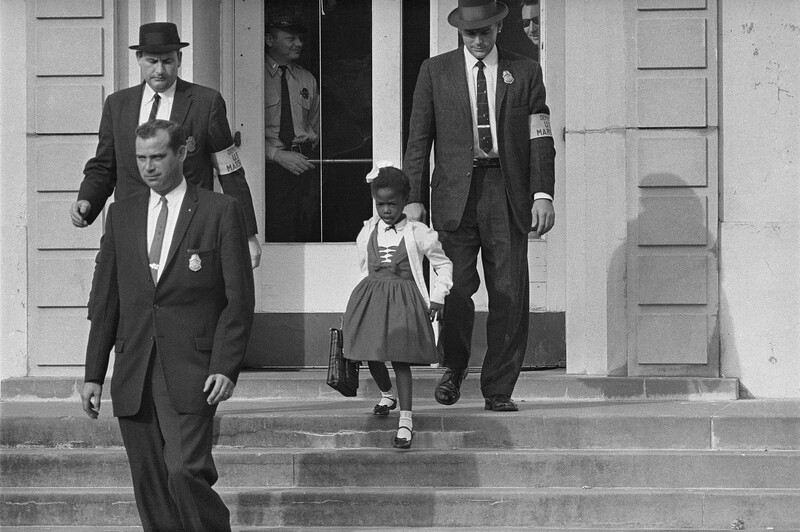
The stigmatization of disability resulted in the social and economic marginalization of generations of Americans with disabilities, and like many other oppressed minorities, left people with disabilities in a severe state of impoverishment for centuries. In the 1800s, people with disabilities were considered meager, tragic, pitiful individuals unfit and unable to contribute to society, except to serve as ridiculed objects of entertainment in circuses and exhibitions.
The civil rights struggle threatened to hoist African Americans up and out of [the] social "place" that whites had created for them. White Southerners would find blacks in their schools and neighborhoods, their restaurants, and polling places. … Many whites denounced the "Civil Wrongs Bill," holding that such federal laws imperiled their own rights. They clung to the notion that rights were finite, and that as blacks gained freedom, whites must suffer a loss of their own liberties. On the precarious seesaw of Southern race relations, whites thought they would plummet if blacks ascended. (p. 62)
Whose rules provide the center of gravity for considering what counts as appropriate behavior? Why are those who don't understand or follow those rules viewed as being in deficit, or having a disorder ? Do folks on the spectrum have a dis order? Or do they simply follow their own order? (p. 1716)
Autism is both a disability and a difference. We need to find ways of alleviating the disability while respecting and valuing the difference. (p. 367)
Anti-Defamation League. (2005). A brief history of the disability rights movement. Retrieved from http://archive.adl.org/education/curriculum_connections/fall_2005/fall_2005_lesson5_history.html
Duncan, A. (2015). Forty years of the Individuals with Disabilities Education Act (IDEA). Washington, DC: U.S. Department of Education.
Esteves, K., & Rao, S. (2008). The evolution of special education: Retracing legal milestones in American history . Alexandria, VA: National Association of Elementary School Principals.
Forman-Brunell, M. (Ed.). (2001). Girlhood in America: An encyclopedia in two volumes . Santa Barbara, CA: ABC-CLIO.
Marable, M., & Mullings, L. (Eds.). (2003). Let nobody turn us around: Voices of resistance, reform, and renewal. New York: Rowman & Littlefield.
Smagorinsky, P. (2011). Confessions of a mad professor: An autoethnographic consideration of neuroatypicality, extranormativity, and education. Teachers College Record, 113 (8), 1701–1732.
Snyder, T. D., de Brey, C., & Dillow, S. A. (2016). Digest of Education Statistics 2014 (NCES 2016-006). Washington, DC: National Center for Education Statistics, Institute of Education Sciences, U.S. Department of Education.
Sokol, J. (2008). White Southerners' reactions to the civil rights movement. In Free at last: The U.S. Civil Rights Movement (pp. 62–64). Washington, DC: U.S. Department of State, Bureau of International Information Programs.
Solomon, A. (2013). Far from the tree: Parents, children, and the search for identity. New York: Scribner.
West, J. (2000). Back to school on civil rights: Advancing the federal commitment to leave no child behind . Washington, DC: National Council on Disability.
Williams, M. (2011, December 27). Colorblind ideology is a form of racism. Psychology Today . Retrieved from www.psychologytoday.com/blog/culturally-speaking/201112/colorblind-ideology-is-form-racism
• 1 Reproducible fact and tip sheets can be found in my book, Autism Spectrum Disorder in the Inclusive Classroom: How to Reach and Teach Students with ASD (Scholastic, 2nd edition, 2016).

Barbara Boroson provides professional development and consultative services nationwide to school districts and parents facilitating successful inclusion and bolstering efforts to support students on the autism spectrum. She has worked in the field of autism education for more than 25 years in clinical, administrative, and advisory capacities.
Boroson speaks frequently at conferences of the International Literacy Association, National School Boards Association, National Association of Elementary School Principals, National Association for the Education of Young Children, and ASCD, among others, as well as at many colleges and graduate schools. She is the author of Autism Spectrum Disorder in the Inclusive Classroom: How to Reach and Teach Students with ASD (Scholastic, 2016).
ASCD is a community dedicated to educators' professional growth and well-being.
Let us help you put your vision into action., related articles.

Balancing Latitude and Limitations
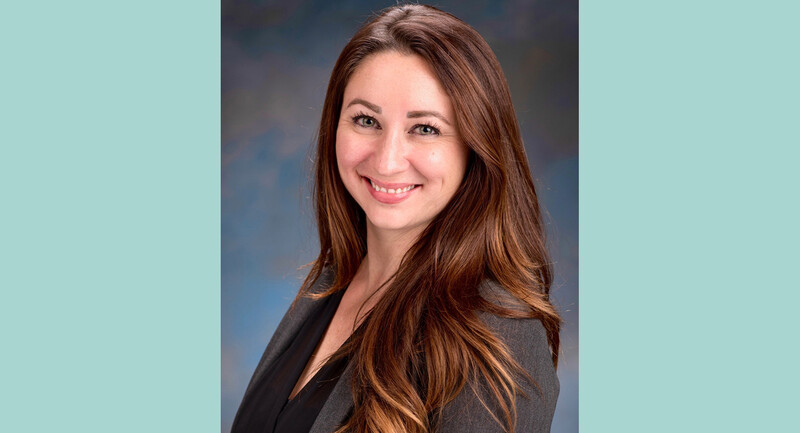
Let’s Provide Teachers Sabbaticals
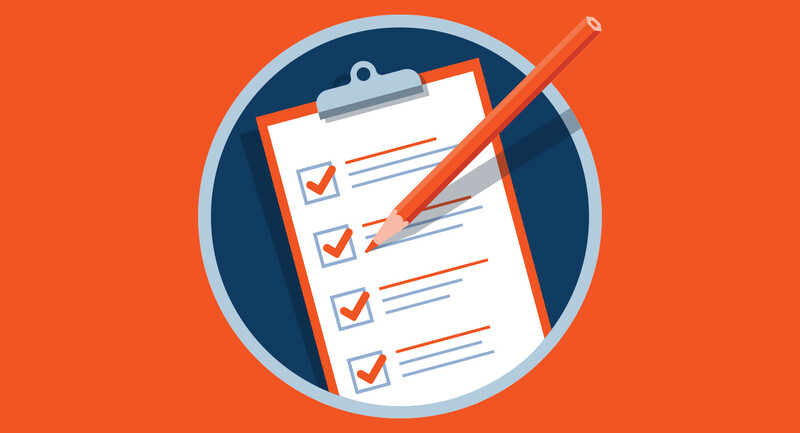
A Temperature Check on Student Needs

And Now for Some Good News

What It Takes to Truly Leave No Child Behind
From our issue.
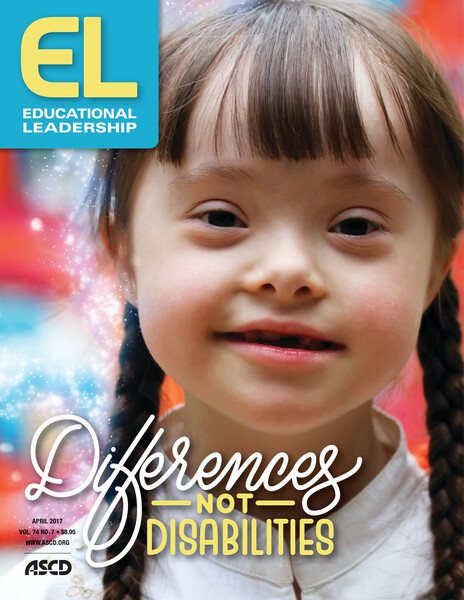
To process a transaction with a Purchase Order please send to [email protected]
You are using an outdated browser. Please upgrade your browser to improve your experience.

Health & Nursing
Courses and certificates.
- Bachelor's Degrees
- View all Business Bachelor's Degrees
- Business Management – B.S. Business Administration
- Healthcare Administration – B.S.
- Human Resource Management – B.S. Business Administration
- Information Technology Management – B.S. Business Administration
- Marketing – B.S. Business Administration
- Accounting – B.S. Business Administration
- Finance – B.S.
- Supply Chain and Operations Management – B.S.
- Accelerated Information Technology Bachelor's and Master's Degree (from the School of Technology)
- Health Information Management – B.S. (from the Leavitt School of Health)
Master's Degrees
- View all Business Master's Degrees
- Master of Business Administration (MBA)
- MBA Information Technology Management
- MBA Healthcare Management
- Management and Leadership – M.S.
- Accounting – M.S.
- Marketing – M.S.
- Human Resource Management – M.S.
- Master of Healthcare Administration (from the Leavitt School of Health)
- Data Analytics – M.S. (from the School of Technology)
- Information Technology Management – M.S. (from the School of Technology)
- Education Technology and Instructional Design – M.Ed. (from the School of Education)
Certificates
- View all Business Degrees
Bachelor's Preparing For Licensure
- View all Education Bachelor's Degrees
- Elementary Education – B.A.
- Special Education and Elementary Education (Dual Licensure) – B.A.
- Special Education (Mild-to-Moderate) – B.A.
- Mathematics Education (Middle Grades) – B.S.
- Mathematics Education (Secondary)– B.S.
- Science Education (Middle Grades) – B.S.
- Science Education (Secondary Chemistry) – B.S.
- Science Education (Secondary Physics) – B.S.
- Science Education (Secondary Biological Sciences) – B.S.
- Science Education (Secondary Earth Science)– B.S.
- View all Education Degrees
Bachelor of Arts in Education Degrees
- Educational Studies – B.A.
Master of Science in Education Degrees
- View all Education Master's Degrees
- Curriculum and Instruction – M.S.
- Educational Leadership – M.S.
- Education Technology and Instructional Design – M.Ed.
Master's Preparing for Licensure
- Teaching, Elementary Education – M.A.
- Teaching, English Education (Secondary) – M.A.
- Teaching, Mathematics Education (Middle Grades) – M.A.
- Teaching, Mathematics Education (Secondary) – M.A.
- Teaching, Science Education (Secondary) – M.A.
- Teaching, Special Education (K-12) – M.A.
Licensure Information
- State Teaching Licensure Information
Master's Degrees for Teachers
- Mathematics Education (K-6) – M.A.
- Mathematics Education (Middle Grade) – M.A.
- Mathematics Education (Secondary) – M.A.
- English Language Learning (PreK-12) – M.A.
- Endorsement Preparation Program, English Language Learning (PreK-12)
- Science Education (Middle Grades) – M.A.
- Science Education (Secondary Chemistry) – M.A.
- Science Education (Secondary Physics) – M.A.
- Science Education (Secondary Biological Sciences) – M.A.
- Science Education (Secondary Earth Science)– M.A.
- View all Technology Bachelor's Degrees
- Cloud Computing – B.S.
- Computer Science – B.S.
- Cybersecurity and Information Assurance – B.S.
- Data Analytics – B.S.
- Information Technology – B.S.
- Network Engineering and Security – B.S.
- Software Engineering – B.S.
- Accelerated Information Technology Bachelor's and Master's Degree
- Information Technology Management – B.S. Business Administration (from the School of Business)
- View all Technology Master's Degrees
- Cybersecurity and Information Assurance – M.S.
- Data Analytics – M.S.
- Information Technology Management – M.S.
- MBA Information Technology Management (from the School of Business)
- Full Stack Engineering
- Web Application Deployment and Support
- Front End Web Development
- Back End Web Development
3rd Party Certifications
- IT Certifications Included in WGU Degrees
- View all Technology Degrees
- View all Health & Nursing Bachelor's Degrees
- Nursing (RN-to-BSN online) – B.S.
- Nursing (Prelicensure) – B.S. (Available in select states)
- Health Information Management – B.S.
- Health and Human Services – B.S.
- Psychology – B.S.
- Health Science – B.S.
- Healthcare Administration – B.S. (from the School of Business)
- View all Nursing Post-Master's Certificates
- Nursing Education—Post-Master's Certificate
- Nursing Leadership and Management—Post-Master's Certificate
- Family Nurse Practitioner—Post-Master's Certificate
- Psychiatric Mental Health Nurse Practitioner —Post-Master's Certificate
- View all Health & Nursing Degrees
- View all Nursing & Health Master's Degrees
- Nursing – Education (BSN-to-MSN Program) – M.S.
- Nursing – Leadership and Management (BSN-to-MSN Program) – M.S.
- Nursing – Nursing Informatics (BSN-to-MSN Program) – M.S.
- Nursing – Family Nurse Practitioner (BSN-to-MSN Program) – M.S. (Available in select states)
- Nursing – Psychiatric Mental Health Nurse Practitioner (BSN-to-MSN Program) – M.S. (Available in select states)
- Nursing – Education (RN-to-MSN Program) – M.S.
- Nursing – Leadership and Management (RN-to-MSN Program) – M.S.
- Nursing – Nursing Informatics (RN-to-MSN Program) – M.S.
- Master of Healthcare Administration
- MBA Healthcare Management (from the School of Business)
- Business Leadership (with the School of Business)
- Supply Chain (with the School of Business)
- Back End Web Development (with the School of Technology)
- Front End Web Development (with the School of Technology)
- Web Application Deployment and Support (with the School of Technology)
- Full Stack Engineering (with the School of Technology)
- Single Courses
- Course Bundles
Apply for Admission
Admission requirements.
- New Students
- WGU Returning Graduates
- WGU Readmission
- Enrollment Checklist
- Accessibility
- Accommodation Request
- School of Education Admission Requirements
- School of Business Admission Requirements
- School of Technology Admission Requirements
- Leavitt School of Health Admission Requirements
Additional Requirements
- Computer Requirements
- No Standardized Testing
- Clinical and Student Teaching Information
Transferring
- FAQs about Transferring
- Transfer to WGU
- Transferrable Certifications
- Request WGU Transcripts
- International Transfer Credit
- Tuition and Fees
- Financial Aid
- Scholarships
Other Ways to Pay for School
- Tuition—School of Business
- Tuition—School of Education
- Tuition—School of Technology
- Tuition—Leavitt School of Health
- Your Financial Obligations
- Tuition Comparison
- Applying for Financial Aid
- State Grants
- Consumer Information Guide
- Responsible Borrowing Initiative
- Higher Education Relief Fund
FAFSA Support
- Net Price Calculator
- FAFSA Simplification
- See All Scholarships
- Military Scholarships
- State Scholarships
- Scholarship FAQs
Payment Options
- Payment Plans
- Corporate Reimbursement
- Current Student Hardship Assistance
- Military Tuition Assistance
WGU Experience
- How You'll Learn
- Scheduling/Assessments
- Accreditation
- Student Support/Faculty
- Military Students
- Part-Time Options
- Virtual Military Education Resource Center
- Student Outcomes
- Return on Investment
- Students and Gradutes
- Career Growth
- Student Resources
- Communities
- Testimonials
- Career Guides
- Skills Guides
- Online Degrees
- All Degrees
- Explore Your Options
Admissions & Transfers
- Admissions Overview
Tuition & Financial Aid
Student Success
- Prospective Students
- Current Students
- Military and Veterans
- Commencement
- Careers at WGU
- Advancement & Giving
- Partnering with WGU
Special Education: History, Resources, Advice
- See More Tags

Special education resources and strategies for teaching students with disabilities.
Teachers and parents of students with disabilities understand the importance of providing an adequate and individualized education for every student to ensure academic success. This understanding is the product of continued efforts in education, as well as through teacher training.
Nevertheless, when it comes to best serving students with disabilities, teacher training historically has sometimes proven to be inadequate , and many school districts suffer from a lack of resources to improve matters. As a result, teachers may struggle when it comes to learning and incorporating best practices for teaching students with special needs.
However, there are a number of special education resources and strategies that can prove to be invaluable for doing so. This guide will provide an overview of special education and provide information about resources to provide each learner with an environment that is conducive to success.
What is special education?
The term “special education” refers to individualized programs, curricula, and instruction designed to address the needs of students with disabilities. The intent of special education is to enable individuals with special needs to reach their fullest potential. Teachers must participate in a relevant special ed curriculum in order to teach these students. While all teaching programs should cover the importance of accommodation and inclusion, it is possible to earn a bachelor’s degree in Special Education , or even attain dual licensure in Elementary Education and Special Education . Educators who want to focus on serving special education students can become highly qualified by seeking higher education through a Master’s of Science in Special Education (which covers grades K-12).
The exact nature of special education has evolved over time, with origins that can be traced back to 1954. In the court ruling of Brown v. Board of Education of Topeka , it was ruled that segregation violated equal educational opportunity. While this decision was based on the injustice of racial segregation, it established a broad understanding that all people deserve equal access to an adequate public education.
Throughout the subsequent years, rights and funding for special education improved dramatically :
1966: An amendment to the Elementary and Secondary Education Act provided federal funds for public education for students with disabilities.
1973: The Rehabilitation Act made it clear that people with disabilities could not be denied benefits from any program receiving federal funds.
1975: The Education for All Handicapped Children Act was signed into law. Today, this is known as the IDEA act — read more on this below.
1982: The court ruling for Board of Education of Hendrick Hudson Central School District v. Rowley stated that students who qualify for special education programs must be provided with individualized instruction to meet their specific needs.
1997: Amendments were made to IDEA to ensure the availability of meaningful, measurable programs for students with special needs. It also improved parents’ involvement in the development of their child’s individualized education program (IEP).
2004: The No Child Left Behind Act improved the quality of special education programs at the state level by requiring statewide assessments and highly qualified, specially trained professionals to teach students with disabilities. While this act had some controversial provisions, it was replaced by the Every Student Succeeds Act in 2015, rectifying many of them.
Today, in accordance with our growing understanding of the needs of students with disabilities, the Office for Civil Rights (OCR) enforces the rights of IDEA-eligible students. Among other duties, the OCR is responsible for ensuring that public education institutions follow laws prohibiting discrimination against students with special needs.
Individuals with Disabilities Education Act (IDEA).
The Individuals with Disabilities Education Act (IDEA) mandates that students with disabilities are provided with a free, adequate, and individualized education. The act states:
“Disability is a natural part of the human experience and in no way diminishes the right of individuals to participate in or contribute to society. Improving educational results for children with disabilities is an essential element of our national policy of ensuring equality of opportunity, full participation, independent living, and economic self-sufficiency for individuals with disabilities.”
In order to remain consistent with these ideals, IDEA is based on six pillars :
The development of individualized education programs: In collaboration with parents, teachers must develop IEPs for each learner with special needs to determine the best accommodations and approaches to instruction in order to maximize each student’s ability to meet their full potential. This can be a time-consuming process, but there are many ways to streamline the creation of IEP goals .
A free and appropriate public education: Using federal and state funding, schools must provide a curriculum with appropriate grade-level standards and which follows each student’s IEP.
Providing a least-restrictive environment: Students with disabilities must be integrated, to the fullest extent which is appropriate, into classrooms with peers who are nondisabled. They must also be provided with adequate accommodations, such as service personnel or assistive technology.
Appropriate evaluation: Students must only be provided with special education services after an appropriate evaluation is performed. This should minimize the number of misidentifications.
Parent and teacher involvement: Parents and teachers should both play an active role in the education of learners with disabilities. For any decision made in regards to the child’s education, parents and teachers should be able to guide — and, when necessary, challenge — decisions that may impact the student. Parent-teacher conflict management skills are an essential component of this process.
Procedural safeguards: IDEA has safeguards in place to protect the rights of students with disabilities, as well as their families. This includes parent participation, access to educational records, due process, civil action, and mediation.
In an effort to meet the standards set by these pillars, school districts around the nation have experienced a surge in demand for highly qualified special education teachers . Only with adequately trained personnel can a school adequately provide for students with special needs.
Special education guidelines.
As noted above, there must be an appropriate evaluation to determine if students qualify for special education services. There are 13 disability categories under IDEA , and these include:
Deaf-blindness
Emotional disturbance
Hearing impairment
Intellectual disability
Multiple disabilities
Orthopedic impairment
Other health impairment
Specific learning disability
Speech or language impairment
Traumatic brain injury
Visual impairment including blindness
If a student’s disabilities are found to fall into one or more of these categories, they are eligible to receive special education services.
Special education terms.
Thus far in this guide, you may have encountered some unfamiliar terms. Special needs teachers and administrators commonly use certain terms that may be new to those who do not have a background in the field. Below, you’ll find a list of definitions for the most common special education-specific terms :
Accommodations: Changes that enable a student with special needs to fully participate and meaningfully engage in academic activities. The nature of an accommodation will depend on the specific needs of the student. For example, a student who has difficulty focusing during lectures might be seated closer to the teacher.
Modifications: Changes to what a student with disabilities is expected to learn. Examples of modifications are a study guide and a corresponding test that encompasses different materials than what other students are given.
Mainstreaming: This term describes the practice of integrating students with special needs into general education classrooms. Students with disabilities will often participate in these classes for part of the school day, then spend the remainder in a special education classroom.
General education classroom: Also known as a “mainstream classroom” or an “inclusive classroom,” a general education classroom may include both nondisabled and disabled students. Research has shown that, when students with disabilities are included in general education classrooms, they can make tremendous strides in personal and social development.
Self-contained classroom: Also known as a “special education classroom,” this is designed specifically to help students with disabilities with specialized support. Because only students with disabilities attend these classes, they are generally smaller than mainstream classrooms.
Individual education program (IEP): As outlined by IDEA, this is a written document that outlines a student’s required accommodations/modifications and goals. This is created in collaboration with educational professionals and the parents of the child.
Behavior intervention plan (BIP): An individualized plan with strategies and support designed to address specific problem behavior. This includes positive behavioral interventions, accommodations, or modifications. Teachers of such students must be familiar with best practices and behavioral management involving extreme behaviors in order to give every student an opportunity to succeed.
Cumulative file: A student’s cumulative file is a set of records including evaluations and information regarding their special needs and placement. Parents have the right to access their child’s cumulative file at any time. This is consistent with the IDEA pillars of parent involvement and including procedural safeguards.
Differential standards for graduation: High school graduation requirements already differ from state to state, but this term refers specifically to the modified standards for graduating that may be used for students with special needs.
Resources by student condition.
There are many resources available for teachers, parents, and students. These include special education lesson plans, disciplinary plans, tutors, support groups, applications, training materials, and more that can make teaching and learning easier to serve students with a wide variety of disabilities.
ADD/ADHD Resources
Child Mind Institute - ADHD : This page provides valuable information, Q&As, and guides for teachers and parents of children with ADD and ADHD.
Understood - Classroom Accommodations for ADHD : Educators and parents exploring potential classroom accommodations for students with ADHD should check out this guide for a comprehensive list of suggestions.
Asperger/Autism Resources
Organization for Autism Research - An Educator’s Guide to Asperger Syndrome : This extensive guide can help educators understand the unique ways in which Asperger syndrome can impact learners, how to promote a positive learning environment, and how to best cooperate with parents and pupils to develop an IEP that best suits each student with the condition.
National Association of Elementary School Principals - Autism Resources : This resource page provides links to tools and research for principals, and it also provides general links to organizations that can help teachers and parents.
Developmental and Learning Disability Resources
Learning Disabilities Association of America - Support and Resources for Educators : An extensive collection of articles and guides on a wide variety of learning disabilities can be found on this page. In addition, there are some useful educator resources related to learning disabilities listed here.
LD Resources Foundation - Self Advocacy Links & Resources : Those looking to advocate on behalf of students with learning disabilities can learn more about helpful organizations to aid them on these links and resources page. Individuals who want to take this advocacy to the next level can consult a career guide to become a special education teacher and strive to make a significant difference.
Special Education Resources for Parents
CHADD - ADHD and School Toolkit for Parents : This toolkit provides data, aids, and strategies for parents to help children with ADHD succeed at school.
Asperger/Autism Network - Programs and Services : Families and friends of students with Asperger syndrome can refer to this page to locate essential sources of information, coaching, college support, training, and support groups.
Center for Parent Information & Resources: Learning Disabilities : Parents can learn more about the basics of learning disabilities, including how to recognize the signs of a potential learning disability, at this information and resource guide. They may also learn more about getting their child evaluated for special education services and what to do if the school refuses to do so.
School Services for Children with Special Needs — Know Your Rights : If you’d like to dive deeper into your rights as a parent and your role in your child’s education check out this guide by the AACAP American Academic of Child and Adolescent Psychiatry.
Other Special Education Resources
National PTA - Special Education Toolkit : Find additional resources related to special education here. It provides links to tools and key organizations that may provide further assistance.
Physical Disabilities — Implications for Learning : This guide discusses the implications that having a physical disability can have on a child’s education, then provides a list of common accommodations educators can use to create a positive and accessible learning environment.
Technology in special education.
Technology has become more accessible within education over the past couple of decades, and it has grown to play an essential role in education for many teachers, parents, and students. This also holds true in special education. Special education technology can improve learning by helping students engage with the material in new and interesting ways. Further, teachers can more easily adapt to the needs of individual students with educational technology.
There are many types of technology in special education that have proven to be invaluable:
Assistive listening devices: Students with difficulties hearing or concentrating can benefit from the use of an assistive listening device. These are designed to make it easier for students to listen during class by amplifying sound.
Examples: FM systems and sound field systems use wireless transmitters to broadcast and amplify the teacher’s voice. Whether an instructor must assist an individual student with special needs in an inclusive classroom or to amplify their voice in a classroom with poor acoustics, this technology can help dramatically.
Text-to-speech tools: Students with disabilities that impact their ability to read, such as visual impairments or dyslexia, can struggle in general education classrooms without the help of text-to-speech tools. By using assistive technology for reading , educators can improve classroom performance for these individuals.
Examples: There are many text-to-speech tools for educators available for both desktops and mobile devices. Using free applications and browser plug-ins, students with vision or reading impairments can save and hear educational content in an audio format.
Switch devices: Mobility impairments can make it hard for students with disabilities to engage with lessons in the same way as their peers. Switch devices allow these learners to engage with content with alternative input devices. There are switch devices designed to allow users to touch, blink, kick, or push and pull to interact with educational content and software.
Examples: Sip-and-puff (SNP) systems allow students with mobility impairments to interact with computers and mobile devices by sipping or puffing on a controller, effectively replacing a mouse or keyboard.
Proofreading technology: Students with disabilities that may impact their mobility, language comprehension, or ability to type can benefit from assistive proofreading technology. This is designed to either automatically fix common errors or to make grammatical suggestions.
Examples: Basic proofreading software can help learners write more efficiently, while more sophisticated solutions can identify student problem areas, then make advanced recommendations. This data can also help teachers determine where a student may require further instruction.
Assistive technology for math: There are a wide range of devices and software options to help students with conditions that impact their ability to complete calculations. From basic arithmetic to calculus and beyond, there are assistive technologies for most subjects in math.
Examples: Calculators can help students solve simple and complex math problems. Some are designed with large buttons, which can help students with mobility or visual impairments. More advanced tools, like equation-solving software, can make suggestions to help students without directly giving them answers. Some even offer games that make teaching math easy and fun .
Augmented and virtual reality: Learners with disabilities who experience struggles focusing on projects or “tuning out” distractions can be aided through augmented or virtual reality software. The former can highlight key elements of a project and provide additional information or guidance, while the latter can provide a virtual environment in which external distractions can be reduced.
Examples: Examples of augmented and virtual reality applications for assistive learning include AR flashcards, AR-enabled worksheets, VR educational simulations, and VR collaboration software. Each of these can improve student engagement by drawing student interest and eliminating distractions.
"I don't want my child in special education."
When a student’s academic performance begins to suffer, it’s natural for parents, teachers, and the student in question to begin exploring options. However, when a child is identified as being eligible for special education services, parents or teachers may resist accepting them due to certain stigmas. The key to overcome this — and offer the best possible educational experience for a child with disabilities — is to bring any concerns to the table. As established above, parents and teachers are both responsible for developing a plan that best serves the learner.
It’s important to have a discussion about the child’s options. Special education services can play an integral role in helping a child achieve their full potential, but not all students with disabilities require them. In some instances, they may not be eligible to receive special education services if they do not meet IDEA’s definition of a child with a disability (see IDEA’s 13 categories of disabilities above).
If a child falls into either of these groups, there are a number of alternatives to special education that parents and teachers should consider. These include additional tutoring, homeschooling, or an alternative school. Each of these can incur some costs, but they can help you give a child with disabilities the individualized instruction they may need to achieve their full potential.
If you’re interested in a career in special education, WGU could be the perfect fit for you. Our Special Education degree programs help prepare you for the things you need to know and do inside the classroom. Our goal at WGU is to help prepare you for an exciting and impactful future career, and when it comes to education, we understand how important it is. We want you to be a great teacher so the students you work with can learn in the best situation possible. Get started with WGU today, and get on the path to a rewarding future.
Ready to Start Your Journey?
HEALTH & NURSING
Recommended Articles
Take a look at other articles from WGU. Our articles feature information on a wide variety of subjects, written with the help of subject matter experts and researchers who are well-versed in their industries. This allows us to provide articles with interesting, relevant, and accurate information.
{{item.date}}
{{item.preTitleTag}}
{{item.title}}
The university, for students.
- Student Portal
- Alumni Services
Most Visited Links
- Business Programs
- Student Experience
- Diversity, Equity, and Inclusion
- Student Communities

EP Magazine
Browse categories.
- Mission Statement
- Guidelines for Writers
- Editorial Calendar
- Accessible Homes
- Financial Planning
- Schools, Camps & Residences
- Diet & Nutrition
- Employment & Transition
- Family, Community + The Holidays
- Autism Awareness
- Covid-19 Special Coverage
- 50th Anniversary Issue
- Vision, Hearing and Speech
- Adaptive Sports and Recreation
- Elderly Care
A Brief History of Special Education: Milestones in the First 50 Years (Part I of II)
Most people would consider the struggle for disability rights and inclusion to have begun in the early 1970’s with the PARC Consent Decree and the passage of P.L. 94-142, The Education for Handicapped Children Act. However, the disability rights movement and the creation of special education laws owe a debt of gratitude to Thurgood Marshall who argued in 1954 before the United States Supreme Court in the Brown vs. The Board of Topeka, Kansas.
BY Linda Shandrick Lengyel, Ph.D. and Ernst VanBergeijk, Ph.D., M.S.W. | June 2021 | Category: 50th Anniversary Issue
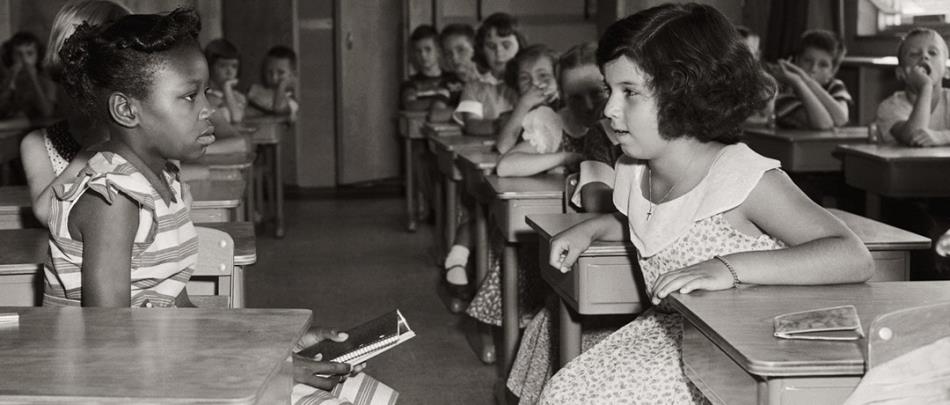
In this landmark decision, the Supreme Court knocked down the “separate but equal” doctrine, which was the foundation of school segregation based upon race. Disability rights advocates used this premise to argue that disabled students were being excluded from education or were served separately in substandard conditions. Estimates were that over 7 million students with disabilities were excluded from public education.
Beyond dismissing the doctrine of “separate but equal” another impact of Brown vs. The Board of Topeka decision was that social movements began turning to the courts for remedy. The Brown case was on the behalf of a “class” of people, having widespread impact for students based on race. In the early 70s there were two seminal class action court cases where states were challenged for not providing an education to students who were disabled, arguing that students with disabilities had the same rights as students without disabilities, and that because of the Brown case, all non-disabled students had the right to an education. The PARC (Pennsylvania Association for Retarded Citizens) v. the Commonwealth of Pennsylvania ended in a settlement agreement in 1972. The PARC Consent Decree stated that the state of Pennsylvania had to provide a free public education for all students with intellectual disabilities and included procedure protections. Similarly, the Mills v. Board of Education was against the District of Columbia in 1972. The Mills case extended the right to education to all students with disabilities in the District of Columbia, including students who were being denied an education due to expulsion and suspension as disciplinary measures (Yell et al., 2011).
Across the country other class action lawsuits were happening based on the need for change in the educational systems. As this was occurring, the Vocational Rehabilitation Act of 1973 and specifically Section 504 of the Act, became the first piece of federal legislation that made it illegal for public institutions which received federal funds to discriminate against individuals on the basis of disability. Initially, the law was used to provide physical access to buildings for those individuals with mobility issues. The struggle to obtain those rights is beautifully captured in therecently-Oscar nominated documentary film, Crip Camp. Those same advocates pushed to have the rights of individuals with disabilities expanded to include private entities with the passage of the Americans with Disabilities Act of 1990. Although initially aimed at protecting the rights of individuals with physical disabilities and providing physical access, the protections were expanded beyond physical access and physical disabilities.
Shortly after the Vocational Rehabilitation Act was passed, federal legislation was passed that mandated and protected the rights of all children with disabilities to have a free public education. The PARC and Mills cases provided the blueprint for Public Law 94-142: The Education for All Handicapped Children Act of 1975 (EHA). It is commonly reported that there are six major principles of the EHA (now called IDEA), however, what is included in the list varies; here we are reporting seven major principles that are all still a part of today’s law:
- All students have a right to a free and public education, known as F.A.P.E.
- All students have a right to be educated in the Least Restrictive Environment, L.R.E.
- All students have a right to an Individual Education Program
- Non-discriminatory assessment and evaluation
- Parent involvement
- Due process procedural safeguards
- Zero-reject
Once legislation has passed, implementation begins which leads to defining the terms and standards of the legislation. As new laws are implemented, the courts, through litigation, are used to provide guidance in following the mandates. Some court decisions have limited reach, while others cross geographic regions, all dependent on how high in the system the case is heard. Federal laws then become “reauthorized”, with changes based, in part, on the findings of the courts. Naturally, after the EHA was passed, there were key court cases that further defined the mandates. In 1982 the Hendrick Hudson Dist. Bd. Of Ed. V. Rowley was the first EHA case heard by the Supreme Court. Amy Rowley, a deaf student, and her parents requested a sign-language interpreter for Amy but were denied. The lower court established that each child should be given the supports needed to reach their fullest potential. However, the Supreme Court overruled, stating that that an appropriate education was provided if the IEP was “reasonably calculated to confer educational benefit” (Yell et al., 2011). Because Amy was doing well academically, she was denied an interpreter. Because the term “educationally benefit” did not specify a standard for adequate educational benefit, future cases applied different standards in deciding whether the provision of FAPE was provided based on educational benefit (Yell & Bateman, 2020).
In 1984, there was another key court case focused on related services in relation to the provision of FAPE. Irving Independent School District v. Tatro stated that health care services that can be provided by a nurse or other trained professional must be provided to the student as a related service if they are necessary to enable the student to receive FAPE; medical services required to be delivered by a physician were not consider a related service. Amber Tatro was an eight-year-old with spina bifida who required clean intermittent catheterization (CIC) during the school day. The school district considered this a medical service and therefore they were not required to include the use of a CIC in her IEP. One of the compelling arguments that this was a related service and not a medical service was that Ambers family members were, after a short training, qualified to perform the procedure, and it was anticipated that Amber herself would soon be able to perform the procedure.
In 1986, there was a reauthorization of the EHA; the significance of this reauthorization is that it expanded who was covered to include early intervention services beginning at birth through the age of two years old; previously, the EHA covered young children beginning at the age of three. Additionally, it was established that children receiving those services were required to have an Individualized Family Service Plan, a provision that expanded the requirement of an IEP to include services for the family. Also of importance, in that same year, congress passed The Handicapped Children’s Protection Act that authorized courts to award attorney’s fees and other expenses that parents or guardians incurred because of pursuing administrative or civil actions under the EHA act of 1975, strengthening the provision of due process procedural safeguards (Florian & West, 1989).
There were several notable court cases that occurred before the next reauthorization in 1990. In 1988 the Honig v. Doe case addressed the expulsion of students with behavioral challenges. The resulting ruling was that schools could not expel a student because of a behavior related to their disability and that suspensions that were over 10 consecutive days in length were considered a change of placement, requiring the IEP team to reconvene. Expulsion or a suspension that lasted longer than 10 days without a change of placement would be considered a denial of FAPE. This case also established that the student would stay in the current placement (stay-put provision) during any administrative or judicial hearings and procedures (Yell et al., 2011).
In 1989, in Timothy W. v. Rochester, a court found that a student was wrongly being denied FAPE because the school district considered him too disabled to receive benefit from an education. The ruling in this court reaffirmed the notion that all students had a right to FAPE, regardless of the severity of their disability, supporting the zero reject provision of EHA (Baumgart & Giangreco, 1996). Another case of significance provided direct guidance to the LRE mandate by implementing a two-pronged test to determine if a student could be moved to a more restrictive environment. In Daniel RR v. State Board of Education (1989), the court applied a two-pronged test, recognizing the difficulty in determining what the least restrictive environment is for the student to receive an appropriate education (FAPE). In this case, the fundament question was when it is okay to remove a student from an inclusive classroom to a self-contained classroom. The court ascertained that the IEP team must first determine if, with the use of supplemental aids and services, the child can receive an appropriate education in the general education classroom (Marx et al., 2014; Yell & Drasgow, 1999). Significant to this test is the consideration of non-academic benefit. Previously in Rowley it was established that academic benefit was a determination in the appropriateness of an IEP; this case highlighted also the non-academic benefits, such as social benefit. Another consideration was the impact on the education of the non-disabled students in the classroom, giving the school district the leeway to remove a student if they are considered disruptive to the education of other students. The second prong of the test focused on other opportunities to be with non-disabled peers. If the student could not be satisfactorily educated in the academic classroom beside their non-disabled peers, the school must still consider including the student to the maximum extent possible. This case made clear that the intent of the EHA was for students with disabilities to be educated as much as possible alongside their non-disabled peers, and that education included non-academic classroom opportunities as well as lunch and recess (Martin et al., 1996; Marx et al., 2014; Yell & Drasgow, 1999).
Individuals with Disabilities Education Act (IDEA)
There were several major changes to the EHA in the reauthorization of 1990; one of those was the name of the law itself. In 1990, the Education for All Handicapped Children Act was renamed to the Individuals with Disabilities Education Act (IDEA), emphasizing a change to “people-first” language as well as using the word disabilities in place of handicapped. Also significant was the mandate a transition plan be provided to all students with an IEP beginning at the age of 16. Additionally, this reauthorization added two distinct categories of disabilities to be covered under the law: Traumatic Brain Injury (TBI) and autism. Assistive technology, for the first time, was a part of the law, adding both assistive technology devices and services (Yell et al., 2011).
After the 1990 reauthorization, there were two more court cases that applied “tests” or a process to determine placement in the least restrictive environment. It was an exciting time for advocates of inclusive education because these cases were occurring at the same time in circuit courts on the East and West coasts. Although in Daniel RR a “test” was established, it did not need to be applied in courts across the country, which is why it is important to understand how courts impact legislation. When there are multiple cases across different geographic regions that have similar findings, it is not unusual to see the impact of those findings in the legislation. Courts have not been consistent in their rulings for inclusive education, thus utility of using these pronged tests. The Oberti v. Board of Education of the Borough of Clementon School District (1993) introduced a three-prong test of LRE. The court determined these factors were relevant in considering the least restrictive environment for an appropriate education:
- whether the school made “reasonable effort” in including the student in the general education classroom;
- comparison of the educational benefits of being included in the general education classroom with supplemental aids and services to the benefits of being educated in the special education classroom; and,
- the impact of the inclusion of the student on their non-disabled peers (Bradley & Wintermann, 2014; Martin et al., 1996; Marx et al., 2014).
The findings of the court were that the school district had not made reasonable effort to include Rafael, a kindergarten student, in part because they had not applied the same strategies and techniques while he was in the general education classroom that were deemed successful in the special education classroom. This further supported the findings of the Daniel RR case where it must be first determined that with the use of supplemental aids and services the student will not receive educational benefit before removing the student from the classroom.
While the Oberti case was happening on the East coast, on the West coast the Sacramento City School District v. Rachel H. case was occurring. When Rachel Holland was in kindergarten, her parents requested that she be placed in the general education classroom full time; the district contended that Rachel would be best educated in the special education classroom for academic subjects and could be in the general education classroom for non-academic times, requiring Rachel to move back and forth between the classrooms. Similar to the Oberti and Daniel RR cases, there was a pronged test; this court applied four considerations. The courts considered both the academic and nonacademic benefits, the effects on inclusion on non-disabled students and the teacher; and in the cost of including Rachel (Bradley & Wintermann, 2014; Martin et al., 1996; Marx et al., 2014). The courts found that Rachel would derive more benefit both academically and non-academically in the general education classroom without distracting the other students with the assistance of a part-time aide. Furthermore, the court found that the cost of including Rachel was overestimated by the district and that although it could be a consideration, costs were not a factor that would prohibit Rachel from being included. In both the Oberti and Holland cases, the court placed the burden of proof on the School Districts, which was seen as a significant win by educational advocates. The outcomes of these cases were celebrated by advocates of inclusion across the country.
The reauthorization in 1997 had many significant implications, and not surprisingly strengthened the focus on inclusive education, although the terms inclusive or inclusion are not in the law itself. Several of the changes were directly designed to improve the inclusive opportunities given to students with disabilities through the provision of the IEP (Wolfe & Harriott, 1998). The composition of the IEP team was addressed by adding the stipulation that at least one general education teacher be involved if the student is expected to be in the general education environment. Added to the existing statement of present levels was the requirement of a statement describing how the student’s disability affects his or her involvement and progress in the general education curriculum. Also added was the requirement to justify the extent to which the student will not participate in general education classes and curriculum. The inclusion of all students in state accountability measures were required, even students with “the most significant cognitive disabilities” (Ryndak et al., 2014). This reauthorization made even clearer the preference for inclusive education and involvement in the general education curriculum.
Another area that had a significant focus was that of behavior supports and discipline (Wolfe & Harriott, 1998). There was a focus on providing behavioral supports and a functional behavioral assessment. Before disciplinary action can be taken, or within 10 days, the team must also conduct a manifestation determination to understand whether the behavior that the student is being disciplined for was a manifestation of their disability, and part of the hearing was a review of what assessments and supports were being provided. Transition services was again addressed in this reauthorization lowering the age requirement for a transition statement from 16 to 14 years old. Details of the transition statement were expanded to include that the IEP should be related to the student’s specific course of study, and transition services were defined. When the student reaches the age of 16, those services must be identified, as well as the providers of those services, including interagency responsibilities and linkages.
The next reauthorization of 2004 did not have as many significant changes as the previous one. Although the name was officially changed to the Individuals with Disabilities Education Improvement Act of 2004 (IDEIA), IDEA is still the acronym most used. The changes of this reauthorization are characterized by the alignment with No Child Left Behind Act of 2001 (NCLB), focusing on accountability (Turnbull, 2005). The requirement that special educators be highly qualified was added to IDEIA, along with the provision of evidenced-based practices, both following the lead of NCLB.
One of the little-known outcomes of the re-authorization of IDEA in 2004 occurred during the public commentary period before IDEA. The U.S. Department of Education was responding to advocates’ calls to include language that explicitly allowed school districts to pay for transition services, including community-based and college-based transition programs. The U.S. DOE responded by stating that IEP teams have always had the ability to pay for community-based or college-based transition programs under Part B of IDEA. In fact, the exact language can be found in 34 CFR Parts 300 and 301 Assistance to States for the Education of Children with Disabilities and Preschool Grants for Children with Disabilities: Final Rule, on page 46,668.
The Schaffer vs. Weast U.S. Supreme Court decision in 2005 dealt a blow to special education advocates and families. Prior to this decision, when there was a dispute between a family and a school district, the burden of proof was laid upon the school district to demonstrate that the student’s Individual Education Plan (IEP) met the student’s goals. If the school district lost the case, they were responsible for the legal fees of the family. The Weast decision reversed the burden of proof, meaning it was incumbent upon to the families to prove the IEP was insufficient and not meeting the student’s goals. School districts which usually have attorneys on retainer, if not on staff, went from losing the majority of disputes to winning more disputes, especially if families were not represented by legal counsel.
*A Brief History of Special Education: Milestones in the First 50 Years (Part II) will focus on special education and the transition aged years. It will be published in EP Magazine’s July 2021 issue.
ABOUT THE AUTHORS:
Linda Shandrick Lengyel, Ph.D. is an Associate Professor at Lesley University in Cambridge MA. Linda is in the Special Education Teacher Preparation program at the Graduate School of Education, preparing teachers to include students with disabilities in inclusive settings. She is also in the Threshold Program, teaching students advocacy and self-determination skills. Her career focus has been inclusive education, transition services, and advocacy.
Ernst VanBergeijk, Ph.D., M.S.W. is a Professor at Lesley University in Cambridge, MA and is the Director of the Threshold Program which is a post-secondary transition program for students with a variety of disabilities. www.lesley.edu/threshold. He also oversees the Lesley University Threshold Alumni Center which provides life-long support for graduates of the Threshold Program. Beginning Summer 2022, the Threshold Program will be offering a six-week summer program focusing upon the acquisition of preemployment, independent living and social skills.
References
20 Code of Federal Regulations (CFR) Parts, 676, 677, and 678. Department of Labor. Employment and Training Administration.
34 CFR Parts 300 and 301 Assistance to States for the Education of Children With Disabilities and Preschool Grants for Children With Disabilities; Final Rule
34 Code of Federal Regulations (CFR) Parts 361 and 463. Department of Education. Workforce Innovation and Opportunity, Joint Rule for Unified and Combined State Plans, Performance Accountability, the One-Stop System Joint Provisions; Final Rule
34 CFR Parts 361, 363, and 397 RIN 1820-AB70 [Docket ID ED-2015-OSERS-OOO1] State Vocational Rehabilitation Services program; State Supported Employment Services program; Limitations on Use of Subminimum Wage https://s3.amazonaws.com/public-inspection.federalregister.gov/2015-05538.pdf
Baumgart, D., & Giangreco, M. (1996). Key lessons learned about inclusion. In D. Lehr & F. Brown (Eds.), Persons who challenge the system: Persons with profound disabilities (pp. 79-97). Brookes Publishing.
Board of Education v. Rowley, 458 U.S. 176 (1982).
Bradley, L. & Winterman, K. G. (2014). Overview of the history and legal perspectives of Special Education. In K. G. Wintermann & C. E. Rosas (Eds.). The IEP checklist: Your guide to creating meaningful and compliant IEPs. Brookes Publishing.
Brown v. Board of Education, 47 U.S. 483 (1954).
Daniel RR v. State Board of Education, 874 F. 2d 1036 (5th Cir. 1989).
Dracut v. Bureau of Special Education Appeals, 737 F. Supp. 2d 35 (D. Mass. 2010).
Education for All Handicapped Children Act of 1975, 20 U.S.C. § 1401 et seq.
Florian, L. D. & West, J. (1989). Congress affirms the rights of children with handicaps. Teaching Exceptional Children, 21(3), 4-7.
Higher Education Opportunities Act of 2008. (P.L. 110 -315).
Individuals with Disabilities Education Act of 1990, 20 U.S.C. § 1401 et seq.
Individuals with Disabilities Education Act (1997). U.S.C. 20. Part A & Part B. §1400, §1401, §1412, §1414, and §1415.
Lehr, D. (2020). Placement of students with severe disabilities who have complex health care needs in general education classes. Research and Practice for Persons with Severe Disabilities, 45(1), 39-44.
Martin, E.W., Martin, R. & Terman, D.L. (1996). The legislative and litigation history of special education. Special Education for Children with Disabilities, 6(1), 25-39.
Marx, T. A., Hart., L., Nelson, L., Love J., Baxter, C. M., Gartin, B., & Whitby, P. J. S. (2014). Guiding IEP teams on meeting the least restrictive mandate. Intervention in School and Clinic, 50(1), 45-50.
Oberti v. Board of Education of Borough of Clementon School District, 995 F.2d 1204 (3rd Cir. 1993).
Ryndak, D. L., Taub, D., Jorgensen, C. M., Gonsier-Gerdin, J., Arndt, K., Sauer, J., Ruppar, A. L., Morningstar, M. E., & Allcock, H. (2014). Policy and the impact on placement, involvement, and progress in general education: Critical issues that require rectification. Research and Practice for Persons with Severe Disabilities, 39(1), 65-74.
The Workforce Innovation and Opportunity Act (WIOA) (H.R. 803).
Timothy W. v. Rochester, New Hampshire, School District, 875 f.2d 954 (1st Cir. 1989).
Turnbull, H. R. (2005). Individuals with Disabilities Education Act Reauthorization: Accountability and personal responsibility. Remedial and Special Education, 26(6), 320-326.
Turnbull, H. R., Shogren, K. A., & Turnbull, A. P. (2011). Evolution of the parent movement: Past, present, and future. In J.M. Kauffman & D.P. Hallahan (Eds.), Handbook of special education (pp. 639–653). Routledge.
Yell, M. L., & Drasgow, E. (1999). A legal analysis of inclusion. Preventing School Failure, 43(3), 118-123.
Yell, M. L., Katsiyannis, A., & Bradley, M. R. (2011). The Individual with Disabilities Education Act: The evolution of special education law. In J. M. Kauffman & D. P. Hallahan (Eds.), Handbook of Special Education (pp. 61-76). Routledge.
Read the article here .

VIEW OTHER ARTICLES
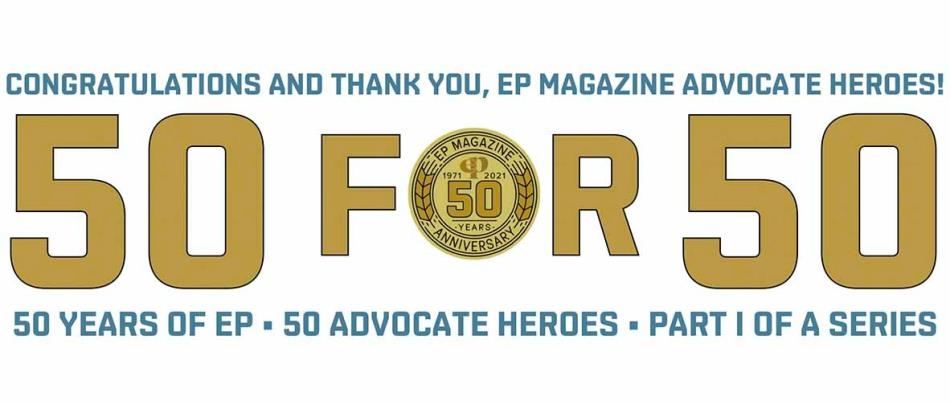
50 for 50: Congratulations and Thank You, EP Magazine Advocate Heroes!
Most people would consider the struggle for disability rights and inclusion to have begun in the early 1970&rs... Read More
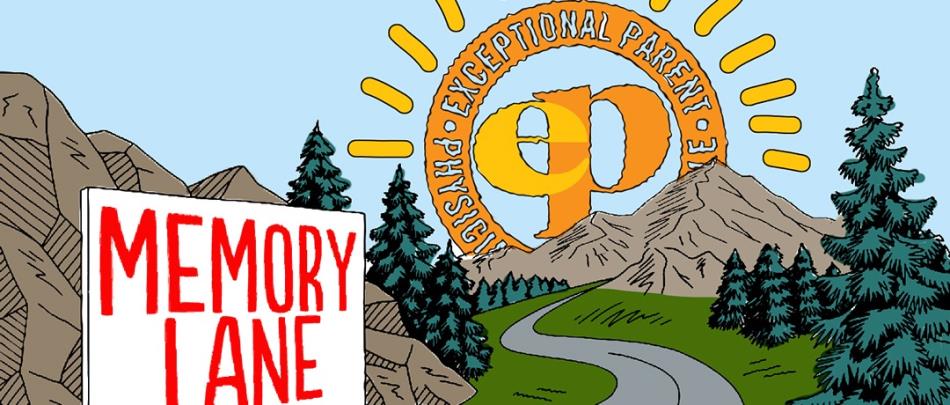
A Behind-the-Scenes Journey Through Half of EP’s 50 Years

Changing How the World Sees

- The History of Special Education: From Isolation to Integration
In this Book

- Margret A. Winzer
- Published by: Gallaudet University Press
Table of Contents

- Frontmatter
- List of Tables
- List of Boxes
- Part 1: Lessons of a Dark Past
- Introduction
- Chapter 1. Disability and Society before the Eighteenth Century: Dread and Despair
- Chapter 2. Education and Enlightenment: New Views and New Methods
- Part 2: Into the Light of a More Modern World
- Chapter 3. The Rise of Institutions, Asylums, and Public Charities
- Chapter 4. Education for Exceptional Students in North America after 1850
- pp. 121-144
- Chapter 5. Physicians, Pedagogues, and Pupils: Defining the Institutionalized Population
- pp. 145-169
- Chapter 6. More Than Three R s: Life in Nineteenth-Century Institutions
- pp. 170-224
- Chapter 7. Teaching Exceptional Students in the Nineteenth Century
- pp. 225-248
- Part 3: Into the New Century
- pp. 251-253
- Chapter 8. Measures and Mismeasures: The IQ Myth
- pp. 254-278
- Chapter 9. The “Threat of the Feebleminded”
- pp. 279-312
- Chapter 10. From Isolation to Segregation: The Emergence of Special Classes
- pp. 313-336
- Chapter 11. New Categories, New Labels
- pp. 337-360
- Part 4: Segregation to Integration
- pp. 363-365
- Chapter 12. Approaching Integration
- pp. 366-385
- Bibliography
- pp. 386-440
- pp. 441-463
Additional Information

Project MUSE Mission
Project MUSE promotes the creation and dissemination of essential humanities and social science resources through collaboration with libraries, publishers, and scholars worldwide. Forged from a partnership between a university press and a library, Project MUSE is a trusted part of the academic and scholarly community it serves.

2715 North Charles Street Baltimore, Maryland, USA 21218
+1 (410) 516-6989 [email protected]
©2024 Project MUSE. Produced by Johns Hopkins University Press in collaboration with The Sheridan Libraries.
Now and Always, The Trusted Content Your Research Requires

Built on the Johns Hopkins University Campus
This website uses cookies to ensure you get the best experience on our website. Without cookies your experience may not be seamless.
special education history
All Formats
Resource types, all resource types.
- Rating Count
- Price (Ascending)
- Price (Descending)
- Most Recent
Special education history
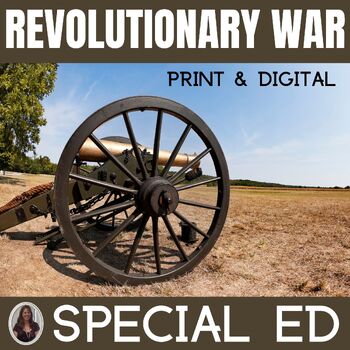
Revolutionary War US History & Colonial America for Special Education

- Google Apps™
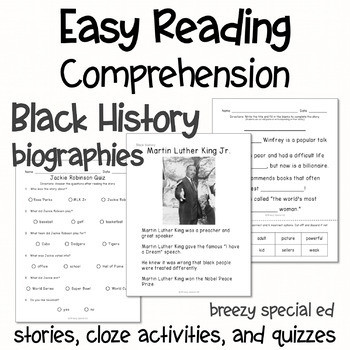
Black History - Easy Reading Comprehension for Special Education

- Easel Activity

Civil Rights Movement for Special Education Black History Month Activities

World War 1 & World War 2 activities History Special Education European History
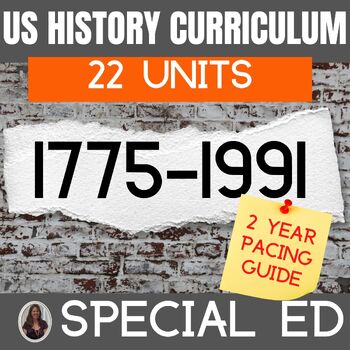
United States History Special Education Curriculum Bundle US History Curriculum
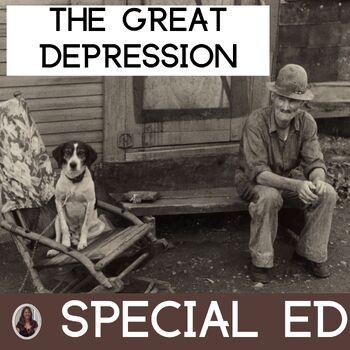
The Great Depression Special Education History Great Depression Activities

The Industrial Revolution Inventions and Effects Special Education US History

Reconstruction Era Post American Civil War for Special Education US History

Black History Month Reading Comprehension - Activities Special Education

February Adapted Books (Valentine's Day, MLK, Black History Month) | Special Ed

Martin Luther King Jr and Rosa Parks for Special Education Black History Month
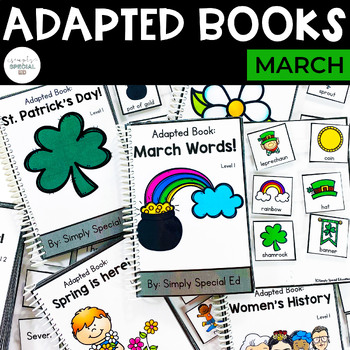
March Adapted Books (St. Patrick's Day, Women's History , Spring) | Special Ed
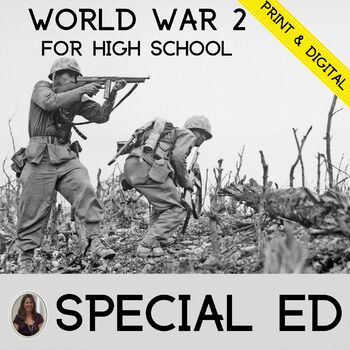
World War 2 timeline, activities, assessment for Special Education US History
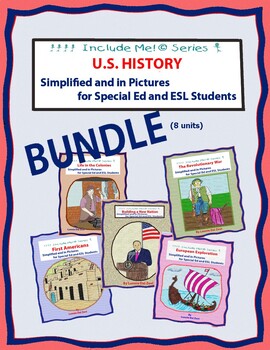
U.S. History Simplified in Pictures For Special Ed and ESL/ELL BUNDLE

World War 1 Unit for Special Education PRINT & DIGITAL European and US History

Thanksgiving History for Special Education Native Americans, Columbus, Colonial

The Cold War Special Education Social Studies US and World History Activities
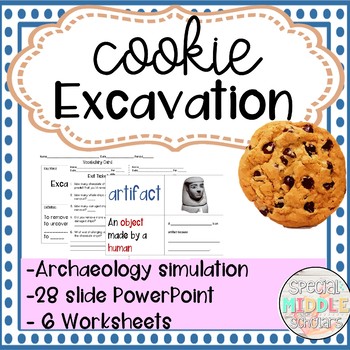
Cookie Excavation Archaeology Simulation History Activity for Special Education

United States History Graphic Study Guide ESL, Special Education ,On-Level Bundle

Women's History Month | Reading Comprehension | Special Education

California Gold Rush Activities Special Education Early American History
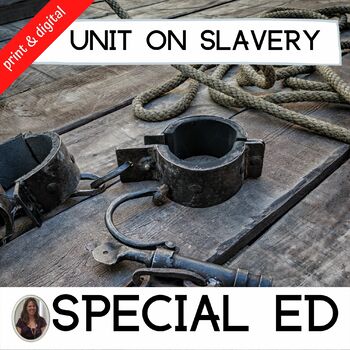
Slavery in America US History Activities for Special Education
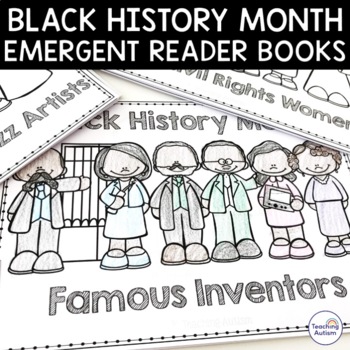
Black History Month Writing Activities for Special Education
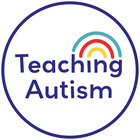
St Patrick's Day Activities for Special Education US Holidays History
- We're hiring
- Help & FAQ
- Privacy policy
- Student privacy
- Terms of service
- Tell us what you think

Special Education History Lesson Plans
Special education history lesson plans are a set of tools used by teachers to help students with disabilities succeed. Special education is a field of education that specifically caters to students with disabilities and/or special needs (such as autism, learning disabilities, and attention disorders). These lesson plans are an essential part of the curriculum because they provide teachers with a way to carry out better learning in their classrooms.

History lesson plans are an excellent way to teach students about the past. Special education history lesson plans are specifically designed to be used by special education teachers and other educators with students who have special needs. They typically include a variety of visual aids and activities that are easy for these students to understand, follow along with, and interact with.
Special education history lesson plans are designed to provide an in-depth discussion of a particular historical event or period. In order to successfully complete this activity, students must be able to effectively identify and summarize key events that occurred during a given time period. In some instances, students may also need to conduct research on their own so as to gain a better understanding of how these events unfolded and what they mean in relation to the overall history of a particular subject matter.
Special education history lesson plans are educational strategies and objectives created specifically for students who have a disability. The term disability can mean a physical, cognitive, mental, or developmental impairment that makes it difficult for students to learn.
Although special education has been around since the early 1800s, it wasn’t until the passage of the Individuals with Disabilities Education Act (IDEA) in 1975 that all children in the U.S. had access to free public education tailored to their needs.
Special education is a broad term used to describe a range of educational services provided to students with disabilities. Special education instruction and related services are designed to meet the individualized needs of these students to help them learn, grow and develop to their fullest potential. Special education history lesson plans typically focus on the evolution of special education from segregation to integration and from exclusion to inclusion.

An education history lesson plan is a written description of what teachers will teach students and how they will teach it. They generally follow a common method of organization, which includes the teacher’s goal or objective, the materials needed, the procedure and/or steps to follow as well as any assessment that might be used.
History lessons plans are often differentiated for different student abilities. For example, a special education history lesson plan may present different information than one designed for average or advanced students. Special education lesson plans may also include more activities and more hands-on learning than a traditional lesson plan. In some cases, special education lesson plans are designed to help students learn the same information as their peers but presented in a way that meets the needs of those with disabilities.

Special education, also called special needs education, is designed for students who have a physical or mental disability. These students may have difficulty in standard classroom settings. Special education programs are designed to meet the specific needs of each student. In order to be eligible for special education services, a child must have a documented disability, their disability must adversely affect their educational performance and they must need special education in order to learn. Students who qualify for special education are assigned an Individualized Education Program (IEP) which outlines their goals and objectives, as well as the specific services and accommodations they will receive. Students who receive special education services are integrated into regular classrooms with non-disabled students whenever possible. The goal is to provide services within the general curriculum framework so that students can participate with non-disabled peers to the greatest degree possible. These students may require specially designed instruction and/or related services such as speech therapy, occupational therapy or physical therapy to help them overcome their disability.
Leave a Comment Cancel Reply
Your email address will not be published. Required fields are marked *
Save my name, email, and website in this browser for the next time I comment.

It's about the kids! Supporting Teachers - Educating Kids
- New Account
Added to Cart
Explore world history.
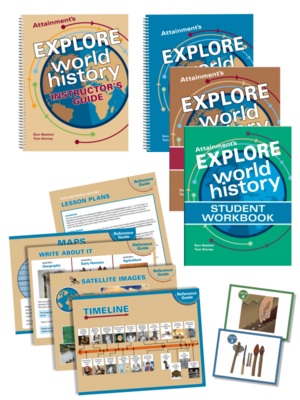
Description
A standards-based curriculum for secondary students that follows a chronology from early humans to modern times
The Student Book has 14 chapters divided into three types: Keys to History, Historical Eras, and Historical Themes. Chapters follow a consistent format: Big Idea, Vocabulary, Chapter Overview, Important Topic, Review, and Write About It. The simplified text is heavily illustrated and intended to be read to students who are nonreaders. Students are frequently presented with important social study tools, like timelines, maps, and tables.
The Instructor�s Guide presents a sequence of ninety-seven, 45-minute lessons by integrating the use of the Student Book, Reference Booklets, and video clips. Also included are downloadable PDFs of all student materials plus chapter and unit assessments at two different levels.
The four laminated Reference Booklets provide a large format for students to study important timelines, maps, graphs, and tables. The Lesson Plans Reference Guide gives an overview of all 97 of the World History lessons, including the lesson type, the objective, the student book pages covered, and the lesson content. The World Historical Videos, provided on DVD and via online streaming, are short clips focusing on big topics like Making Stone Tools and the Rise of Agriculture.
The 108 Study Cards help students review the big ideas in the chapter. These cards can also be used for the Write About It activity with students who are nontraditional writers.
World History Chapters:
The Curriculum includes: One Student Book, one 2-part consumable Student Workbook, one Instructor�s Guide with downloadable PDFs, World Historical Videos DVD, 1 set of Reference Booklets, 1 set of Study Cards, and 1 Lesson Plans Reference Booklet.
The Curriculum Plus includes: The Curriculum plus a total of 10 consumable Student Workbooks (10 2-part workbooks), 2 sets of Reference Booklets, the entire page set of workbook pages as accessible GoWorksheets (iPad only), and samples of communication overlays. The GoWorksheets can be used with the free GoWorksheet app or the full GoWorksheet Plus app available on the App Store.
- Publisher: Attainment Company
- Platform: Mac/Win
- Item #: EWH-10W
- Availability: In Stock
Academic License Eligibility
Academic/student/teacher affiliation required.
Are You Eligible? Most products are available to everyone at our normal great prices. However, products with "Proof of Academic Affiliation Required" are only available to teachers, students, schools, and school employees and require you to verify your academic eligibility. To purchase Academic product - Add the product(s) to your shopping cart and proceed to checkout. THEN, after checking out, you may upload your Academic Affiliation when the website requests it, or you may email or fax us a picture of your school photo ID card. A valid ID contains your name, your picture, your school's name, and current enrollment dates. Be sure to include your order number with any communication. If you are a school teacher or employee, please include a picture ID or other valid ID information on school letterhead. If you have any questions, please notify us at: E-mail: [email protected] Phone: 800-877-9378 Toll-free Fax: 800-815-5154
Features and Benefits
- Ideal for students participating in alternate assessments
- Supports students with an intellectual disability or autism
- Creates a full-year curriculum or divides into separate lessons
- Student book includes 14 chapters with a consistent format
- Incorporates timelines, maps, tables, and historical videos
- Symbol-supported text for being read aloud and assisting nonreaders or emergent readers
Submit a Review

Last Items Viewed
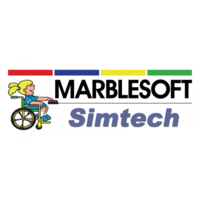
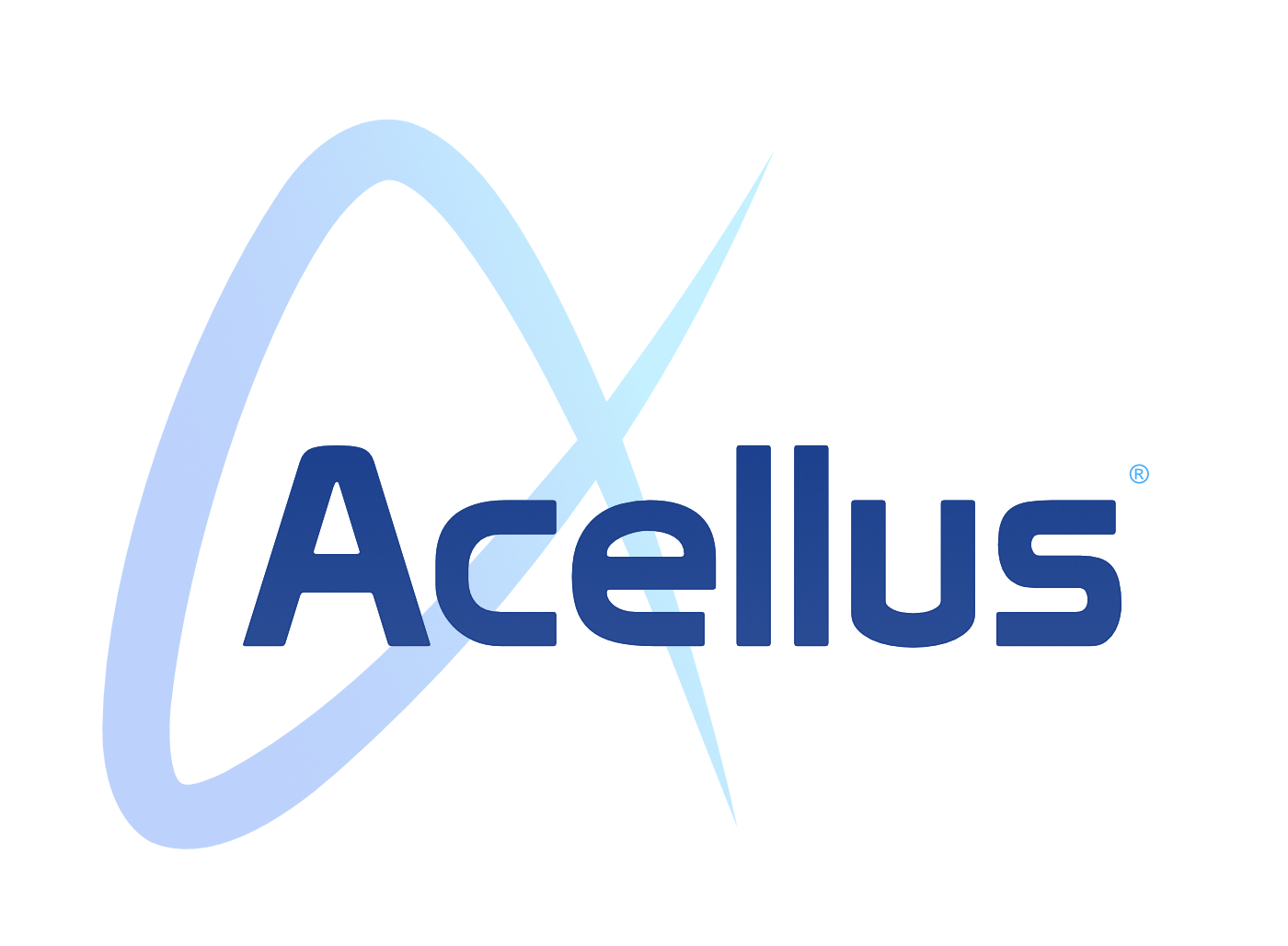
World History – SE

Course Features
Course details, course overview.

Scope and Sequence
#wrap h5 { font-family: Open Sans !important;} #wrap #header #nav > li > a { color:;} #wrap #header #nav > li > a:hover,.transparent-header-w.t-dark-w #header.horizontal-w.duplex-hd #wrap #header #nav > li:hover > a, .transparent-header-w #header.horizontal-w #wrap #header #nav > li:hover > a {color:;} #wrap #header #nav > li.current > a, #wrapv #header #nav li.current ul li a:hover, #wrap #header #nav > li.active > a {color:;} #wrap #scroll-top a {background-color:;} #wrap #scroll-top a:hover {background-color:;} #wrap.colorskin-custom .course-content .products li a.add_to_cart_button,.colorskin-custom .llms-notice a,.colorskin-custom .llms-checkout-section a,#wrap.colorskin-custom .wn-course-progress a:hover,.colorskin-custom .llms-access-plan-footer .llms-button-action.button,.colorskin-custom .llms-access-plan-restrictions ul li a,.colorskin-custom .w-single-event-phone:before,.colorskin-custom .courses-grid article .mc-content h5 a:hover,.colorskin-custom .courses-grid article .mc-price,.colorskin-custom .testimonials-slider-w.ts-penta .testimonial-content h4 q:before,.colorskin-custom .icon-box10:hover h4,.colorskin-custom .icon-box9 h4,.colorskin-custom .icon-box8 i,.colorskin-custom ul.check2 li:before,.colorskin-custom li.check2:before,.colorskin-custom .cer-online2 .student-name,#wrap.colorskin-custom ul.check li:before, #wrap.colorskin-custom li.check:before,.transparent-header-w.t-dark-w .colorskin-custom #header.horizontal-w #nav>li:hover>a,.transparent-header-w.t-dark-w .colorskin-custom #header.horizontal-w #nav>li.current>a,.colorskin-custom .widget.buddypress div.item-options a ,.colorskin-custom #buddypress a,.colorskin-custom #buddypress a:visited,.colorskin-custom span.bbp-breadcrumb-sep , .colorskin-custom .bbp-body a,.colorskin-custom .bbp-body a:visited , .colorskin-custom .bbp-single-topic-meta a , .colorskin-custom .blog-post a:hover,.colorskin-custom .blog-author span,.colorskin-custom .blog-line p a:hover , .colorskin-custom h6.blog-date a:hover,.colorskin-custom h6.blog-cat a:hover,.colorskin-custom h6.blog-author a:hover , .colorskin-custom .blog-line:hover h4 a , .colorskin-custom a.readmore , .colorskin-custom #commentform input[type="submit"] , .colorskin-custom .blgtyp1 .au-avatar-box h6:after , .colorskin-custom .w-next-article:hover a:before,.colorskin-custom .w-prev-article:hover a:before,.colorskin-custom .w-next-article a:after,.colorskin-custom .w-prev-article a:after , .colorskin-custom .w-next-article:hover a, .w-prev-article:hover a , .colorskin-custom .single-event .event-tag, .colorskin-custom .date-box:hover h3 , .colorskin-custom .faq-toggle .acc-trigger a:before , .colorskin-custom .button.bordered-bot.theme-skin , .colorskin-custom .button.bordered-bot.gold , .colorskin-custom .w-table a:hover , .colorskin-custom .courses-grid article .mc-content h6 a:hover , .colorskin-custom .modern-cat:hover a, .modern-cat:hover i , .colorskin-custom .modern-grid .llms-title a:hover , .colorskin-custom .modern-grid .llms-price-wrapper .llms-price , .colorskin-custom .course-list-content h5 a:hover , .colorskin-custom .w-course-list .course-list-price , .colorskin-custom .w-course-list .course-list-meta i , #wrap.colorskin-custom .um-icon-android-checkbox-outline , #wrap.colorskin-custom .wpb_accordion .wpb_accordion_wrapper .ui-state-active a, #wrap.colorskin-custom .wpb_accordion .wpb_accordion_wrapper .wpb_accordion_header a:hover , .colorskin-custom .testimonials-slider-w.ts-hexa .testimonial-content h4 q:before ,.colorskin-custom .testimonials-slider-w.ts-hexa .testimonial-content h4 q:after, #wrap.colorskin-custom .testimonials-slider-w.ts-hexa .w-crsl .owl-buttons div:after , #wrap.colorskin-custom .crsl .owl-buttons .owl-prev , #wrap.colorskin-custom .crsl .owl-buttons .owl-next , .colorskin-custom .contact-info i , .colorskin-custom ul.check li:before, li.check:before , .colorskin-custom .acc-trigger a:hover,.colorskin-custom .acc-trigger.active a,.colorskin-custom .acc-trigger.active a:hover , .colorskin-custom .w-pricing-table1 .plan-title , .colorskin-custom .w-pricing-table2 .plan-price , .colorskin-custom .w-pricing-table2 .price-footer a.readmore , .colorskin-custom .events-clean .event-article:hover .event-title , .colorskin-custom .events-minimal .event-date , .colorskin-custom .events-minimal a.magicmore:hover , .colorskin-custom .a-course h4 a:hover , .colorskin-custom .teaser-box2 .teaser-subtitle , .colorskin-custom .teaser-box7:hover h4 , .colorskin-custom .latestnews2 .ln-item .ln-content .ln-button:hover , .colorskin-custom .latestposts-one .latest-title a:hover , .colorskin-custom .latestposts-two .blog-line p.blog-cat a , .colorskin-custom .latestposts-two .blog-line:hover h4 a , .colorskin-custom .latestposts-three h3.latest-b2-title a:hover , .colorskin-custom .latestposts-three h6.latest-b2-cat a, .latestposts-three .latest-b2-metad2 span a:hover, .colorskin-custom .latestposts-six .latest-title a:hover , .colorskin-custom .latestposts-six .latest-author a:hover , .colorskin-custom .latestposts-seven .wrap-date-icons h3.latest-date , .colorskin-custom .latestposts-seven .latest-content .latest-title a:hover , .colorskin-custom .latestposts-seven .latest-content .latest-author a , .colorskin-custom .latestposts-seven .latest-content .latest-cat a:hover , .colorskin-custom .tribe-events-list-separator-month span , .colorskin-custom .tribe-events-list .type-tribe_events h2 a:hover , .single-tribe_events .colorskin-custom .w-event-meta dd a:hover , #wrap.colorskin-custom #tribe-events .tribe-events-button , .single-tribe_events .colorskin-custom .w-single-event-organizer i,.single-tribe_events .colorskin-custom .w-tribe-events-meta-date i, .colorskin-custom .w-single-event-date:before,.colorskin-custom .w-single-event-time:before,.colorskin-custom .w-single-event-location:before,.colorskin-custom .w-single-event-category:before,.colorskin-custom .w-tribe-event-cost:before,.colorskin-custom .w-tribe-event-website:before, .colorskin-custom .tribe-events-list-separator-month span , .colorskin-custom #tribe-events-content-wrapper .tribe-events-sub-nav a , .colorskin-custom .events-grid .event-article .event-title:hover , .colorskin-custom .events-grid2 .event-article .event-title:hover , .colorskin-custom .goals .goal-content .goal-title:hover , .colorskin-custom .goals .goal-content .donate-button , .colorskin-custom .goals .goal-progress .vc_pie_chart_value, .colorskin-custom .blox .widget_search input[type="submit"]#searchsubmit.btn, .max-hero .widget_search input[type="submit"]#searchsubmit.btn , .colorskin-custom .course-main .w-category a ,.colorskin-custom .course-main .course-postmeta span, #wrap.colorskin-custom .course-content .llms-button , .colorskin-custom .course-content .container .llms-message a , .colorskin-custom .button#llms_review_submit_button , .colorskin-custom .llms-lesson-preview.is-complete .llms-lesson-link,.colorskin-custom .llms-lesson-preview .llms-lesson-link.free , .colorskin-custom .w-course-price , .colorskin-custom .llms-lesson-preview .llms-lesson-link:hover .lesson-tip:hover i:before, .colorskin-custom .llms-parent-course-link a , .colorskin-custom .blgt1-top-sec a:hover , .colorskin-custom .llms-lesson-preview.prev-lesson.previous:hover h5,.colorskin-custom .llms-lesson-preview.prev-lesson.previous span,.colorskin-custom .llms-lesson-preview.next-lesson.next:hover h5,.colorskin-custom .llms-lesson-preview.next-lesson.next span , .colorskin-custom .llms-lesson-preview.prev-lesson.previous:hover a:before,.colorskin-custom .llms-lesson-preview.prev-lesson.previous a:after,.colorskin-custom .llms-lesson-preview.next-lesson.next:hover a:before,.colorskin-custom .llms-lesson-preview.next-lesson.next a:after , .colorskin-custom .llms-lesson-preview .llms-widget-syllabus .done.llms-free-lesson-svg,.colorskin-custom .llms-widget-syllabus .lesson-complete-placeholder.done,.colorskin-custom .llms-widget-syllabus .llms-lesson-complete.done,.colorskin-custom .llms-widget-syllabus .llms-lesson-preview .done.llms-free-lesson-svg , .colorskin-custom .llms-quiz-result-details ul li a , .colorskin-custom .llms-template-wrapper h4 span , .colorskin-custom .questions-total , .colorskin-custom .llms-checkout-wrapper .llms-checkout .llms-title-wrapper h4 a, #wrap.colorskin-custom .author-carousel .owl-buttons div:hover,.colorskin-custom .author-carousel .owl-buttons div:active, .colorskin-custom .filter-category-dropdown.nice-select:after , #wrap.colorskin-custom .filter-category .course-category.active ul li.active a,#wrap.colorskin-custom .filter-category .course-category.active ul li.active > a i,#wrap.colorskin-custom .filter-category .course-category.active ul li.active a span , .colorskin-custom a.btn.btn-default.btn-sm.active,.colorskin-custom a.btn.btn-default.btn-sm.active:hover , .colorskin-custom .footer-contact-info i , #wrap.colorskin-custom .enrolment-wrap .enrolment-item:nth-of-type(odd) h4:after, #wrap.colorskin-custom .enrolment-wrap .enrolment-item:nth-of-type(even) h4:after, .colorskin-custom .enrolment-wrap .enrolment-item:hover span , #wrap.colorskin-custom .answer-questions.about-us input[type="submit"]:hover , #wrap.colorskin-custom .wpcf7 .instructor p:hover:before , .colorskin-custom .contac-info a , .colorskin-custom .switch-field input:checked+label , .colorskin-custom .course-sorting-wrap .nice-select:after , .colorskin-custom .blox.dark .icon-box2 i , .colorskin-custom .blox.dark .icon-box2:hover h4 , .colorskin-custom .icon-box4 i , .colorskin-custom .icon-box4:hover i , .colorskin-custom .icon-box7 , .colorskin-custom .icon-box7 i , .colorskin-custom .icon-box7 a.magicmore:hover , .colorskin-custom .icon-box8 a.magicmore , .colorskin-custom .icon-box9:hover a.magicmore , .colorskin-custom .icon-box11 i , .colorskin-custom .icon-box11 .magicmore , .colorskin-custom .icon-box12 i , .colorskin-custom .blox.dark .icon-box13:hover i , .colorskin-custom .icon-box14 i , .colorskin-custom .icon-box14 p strong , .colorskin-custom .icon-box15 i , .colorskin-custom .icon-box16 i,.colorskin-custom .icon-box16 img , .colorskin-custom .icon-box20 i , .colorskin-custom.dark-submenu #nav ul li a:hover , .colorskin-custom.dark-submenu #nav ul li.current a , #wrap.colorskin-custom.dark-submenu #nav ul li ul li.current a , #wrap.colorskin-custom.dark-submenu #nav ul li ul li:hover a , .colorskin-custom #header-b .course-category-box2:hover a span , .transparent-header-w .colorskin-custom #header.horizontal-w #nav > li:hover > a, .transparent-header-w .colorskin-custom #header.horizontal-w #nav > li.current > a , .colorskin-custom .footer-in h5.subtitle,.colorskin-custom .toggle-top-area h5.subtitle , .colorskin-custom .breadcrumbs-w i , .colorskin-custom.online-t .top-bar .inlinelb.topbar-contact:hover , .colorskin-custom.online-t #footer .widget ul li:before , .colorskin-custom.online-t #footer .widget ul li a:hover , .colorskin-custom.online-t #footer .widget-subscribe-form input[type="text"] , .colorskin-custom.online-t #footer .widget-subscribe-form button , .colorskin-custom.online-t #footer .widget-subscribe-form button:before , .colorskin-custom.online-t #tribe-events-content-wrapper .tribe-events-calendar div[id*=tribe-events-daynum-] , .colorskin-custom .widget ul li.cat-item:hover a , .colorskin-custom .widget ul li.cat-item a:before , .colorskin-custom .widget ul .recentcomments:hover:before , .colorskin-custom .widget-tabs .tabs li.active a , #wrap.colorskin-custom .review-result-wrapper .review-result i , .colorskin-custom .course-search-form .nice-select:after , .colorskin-custom .widget .course-categories li a i , .colorskin-custom .widget .course-categories li a:hover,.colorskin-custom .widget .course-categories li a:hover span , #wrap.colorskin-custom .w-crsl .owl-buttons div:hover,.colorskin-custom .our-clients-wrap.w-crsl .owl-buttons div:active, #wrap.colorskin-custom .widget .owl-buttons div:after , .colorskin-custom .llms-widget-syllabus .lesson-title.active a , .colorskin-custom .llms-widget-syllabus .lesson-title.done:before , .colorskin-custom .widget.buddypress div.item-options a , .woocommerce .colorskin-custom div.product .woocommerce-tabs ul.tabs li.active , .woocommerce .colorskin-custom ul.products li.product .price , .woocommerce .colorskin-custom div.product form.cart button.single_add_to_cart_button:hover , .woocommerce .colorskin-custom .star-rating span:before , .woocommerce .colorskin-custom .myaccount_user a,.woocommerce .colorskin-custom .col-1.address .title a , .colorskin-custom .pin-box h4 a:hover,.colorskin-custom .tline-box h4 a:hover , .colorskin-custom .pin-ecxt h6.blog-cat a:hover , .colorskin-custom .pin-ecxt2 p a:hover , .colorskin-custom .blog-single-post .postmetadata h6.blog-cat a:hover , .colorskin-custom h6.blog-cat a , .colorskin-custom .blgtyp3.blog-post h6 a, .blgtyp1.blog-post h6 a, .blgtyp2.blog-post h6 a, .blog-single-post .postmetadata h6 a, .blog-single-post h6.blog-author a , .colorskin-custom .blgtyp3.blog-post h6 a:hover,.colorskin-custom .blgtyp1.blog-post h6 a:hover,.colorskin-custom .blgtyp2.blog-post h6 a:hover,.colorskin-custom .blog-single-post .postmetadata h6 a:hover,.colorskin-custom .blog-single-post h6.blog-author a:hover , .colorskin-custom .blog-post p.blog-cat a,.colorskin-custom .blog-line p.blog-cat a , .colorskin-custom .about-author-sec h3 a:hover , .colorskin-custom .blog-line:hover .img-hover:before , .colorskin-custom .rec-post h5 a:hover , .colorskin-custom .rec-post p a:hover , .colorskin-custom a.magicmore , .colorskin-custom .rec-post h5 a:hover , .colorskin-custom .blgtyp3.blog-post h6 a,.colorskin-custom .blgtyp1.blog-post h6 a,.colorskin-custom .blgtyp2.blog-post h6 a,.colorskin-custom .blog-single-post .postmetadata h6 a,.colorskin-custom .blog-single-post h6.blog-author a ,.colorskin-custom .blgtyp1.blog-post h6.blog-comments a , .colorskin-custom .blgtyp3.blog-post h6 a:hover,.colorskin-custom .blgtyp1.blog-post h6 a:hover,.colorskin-custom .blgtyp2.blog-post h6 a:hover,.colorskin-custom .blog-single-post .postmetadata h6 a:hover,.colorskin-custom .blog-single-post h6.blog-author a:hover ,.colorskin-custom .blgtyp1.blog-post h6.blog-comments a:hover , #wrap.colorskin-custom .colorf, #wrap.colorskin-custom .hcolorf:hover , .colorskin-custom .faq-minimal a:hover h4 , .colorskin-custom .faq-minimal .faq-icon , .colorskin-custom .circle-box p strong, #wrap.colorskin-custom .wpb_accordion .wpb_accordion_wrapper .ui-state-active .ui-icon:before , .colorskin-custom .our-team h5 , .colorskin-custom .testimonials-slider-w .testimonial-brand h5 , #wrap.colorskin-custom .vc_carousel.vc_carousel_horizontal.hero-carousel h2.post-title a:hover , #wrap.colorskin-custom .wpb_gallery_slides .flex-caption h2.post-title a:hover , .colorskin-custom .events-clean2 .event-article:hover .event-title , .colorskin-custom #tribe-events-content .tribe-events-tooltip h4,.colorskin-custom #tribe_events_filters_wrapper .tribe_events_slider_val, .single-tribe_events .colorskin-custom a.tribe-events-gcal, .single-tribe_events .colorskin-custom a.tribe-events-ical , #wrap.colorskin-custom .hebe .tp-tab-title , .colorskin-custom .latestposts-one .latest-author a:hover , .latestposts-two .blog-post p.blog-author a:hover , .colorskin-custom .latestposts-two .blog-line:hover .img-hover:before , .colorskin-custom .latestposts-four h3.latest-b2-title a:hover , .colorskin-custom .latestposts-five h6.latest-b2-cat a , .colorskin-custom .latestposts-six .latest-content p.latest-date , .colorskin-custom .a-post-box .latest-title a:hover , .colorskin-custom .tribe-events-list .tribe-events-read-more , .colorskin-custom .tribe-events-list .type-tribe_events h2 a:hover , .colorskin-custom .goal-box .goal-sharing .goal-sharing-icon , .colorskin-custom .goal-box .goal-sharing .goal-social a:hover , .colorskin-custom .button.llms-next-lesson , .colorskin-custom .w-llms-my-certificates h3 i,.colorskin-custom .w-llms-my-achievements h3 i,.colorskin-custom .w-llms-my-courses h3 i,.colorskin-custom .w-llms-my-memberships h3 i , .colorskin-custom .w-contact-sidebar .icon-box i , .colorskin-custom .icon-box1 a.magicmore , .colorskin-custom #nav a:hover,.colorskin-custom #nav li:hover > a , .colorskin-custom #nav > li.current > a,.colorskin-custom #nav > li > a.active , .colorskin-custom #header.sticky #nav-wrap #nav #nav > li:hover > a , .colorskin-custom.dark-submenu #nav li.mega ul.sub-posts li a:hover , .colorskin-custom .nav-wrap2 #nav > li:hover > a, .top-links #nav > li:hover > a , .colorskin-custom .nav-wrap2.darknavi #nav > li > a:hover,.colorskin-custom .nav-wrap2.darknavi #nav > li:hover > a , .colorskin-custom .nav-wrap2 #nav > li.current > a , .colorskin-custom #header.sticky .nav-wrap2.darknavi #nav > li > a:hover , .w-header-type-12 .colorskin-custom #nav > li:hover > a , .colorskin-custom #header.horizontal-w.w-header-type-10 #nav > li:hover > a,.transparent-header-w .colorskin-custom #header.horizontal-w.w-header-type-10 #nav > li.current > a,.colorskin-custom #header.horizontal-w.w-header-type-10 #nav > li.current > a , .colorskin-custom .header-bottom #header-b li:hover a i , .colorskin-custom #header-b li.mega ul[class^="sub-"] ul li:hover a, .colorskin-custom #nav > li:hover > a,.colorskin-custom #nav li.current > a,.colorskin-custom #nav li.active > a, .colorskin-custom #header.res-menu #menu-icon:hover i,.colorskin-custom #header.res-menu #menu-icon.active i , .transparent-header-w .colorskin-custom #header.horizontal-w.duplex-hd #nav > li:hover > a, .transparent-header-w .colorskin-custom #header.horizontal-w.duplex-hd #nav > li.current > a , .colorskin-custom .top-links a:hover , .colorskin-custom .top-bar h6 i , .colorskin-custom .online-learning-contact .row:hover .icon , .colorskin-custom .online-t-contact .row:hover .icon , .colorskin-custom.online-t #tribe-events-content .tribe-events-tooltip h4,.colorskin-custom.online-t #tribe_events_filters_wrapper .tribe_events_slider_val, .single-tribe_events .colorskin-custom.online-t a.tribe-events-gcal, .single-tribe_events .colorskin-custom.online-t a.tribe-events-ical , .colorskin-custom .toggle-top-area .widget ul li a:hover ,.colorskin-custom #footer .widget ul li a:hover , .woocommerce .colorskin-custom nav.woocommerce-pagination ul li a , .woocommerce .colorskin-custom ul.products li.product:hover a.add_to_cart_button:hover , .woocommerce .colorskin-custom ul.cart_list li a:hover,.woocommerce .colorskin-custom ul.product_list_widget li a:hover { color: #2d5c88} #wrap.colorskin-custom .course-content .products:hover li .product-inner h3,.colorskin-custom .llms-checkout-wrapper .llms-form-heading,.colorskin-custom .llms-button-action,#wrap.colorskin-custom .wn-course-progress a,#wrap.colorskin-custom .llms-access-plan:hover .llms-access-plan-title,.colorskin-custom .llms-access-plan:hover .llms-access-plan-footer .llms-button-action.button,.colorskin-custom .wn-button.llms-button-primary,.woocommerce .colorskin-custom .button,.colorskin-custom .flip-clock-wrapper ul li a div div.inn,.colorskin-custom #header .woo-cart-header .header-cart span,.colorskin-custom .llms-purchase-link-wrapper .llms-button,.colorskin-custom #header.res-menu #menu-icon span.mn-ext1,.colorskin-custom #header.res-menu #menu-icon span.mn-ext2,.colorskin-custom .w-pricing-table3.featured .ptcontent > span,.colorskin-custom .icon-box10:hover i,.colorskin-custom .icon-box9:hover i,.colorskin-custom .subscribe-flat .subscribe-box-input .subscribe-box-submit,.colorskin-custom .max-hero h5:before,.colorskin-custom .teaser-box4 .teaser-title,.colorskin-custom .teaser-box4 .teaser-subtitle ,.colorskin-custom .wpcf7 .wpcf7-form input[type="submit"],.colorskin-custom .wpcf7 .wpcf7-form input[type="reset"],.colorskin-custom .wpcf7 .wpcf7-form input[type="button"],#wrap.colorskin-custom.school-t .top-bar,.colorskin-custom #buddypress .comment-reply-link,.colorskin-custom #buddypress .generic-button a,.colorskin-custom #buddypress a.button,.colorskin-custom #buddypress button,.colorskin-custom #buddypress input[type=button],.colorskin-custom #buddypress input[type=reset],.colorskin-custom #buddypress input[type=submit],.colorskin-custom #buddypress ul.button-nav li a,.colorskin-custom a.bp-title-button,.colorskin-custom a.readmore:after , .colorskin-custom h4.comments-title:after , #wrap.colorskin-custom #commentform input[type="submit"]:hover , .colorskin-custom .commentbox h3:after , .colorskin-custom .post-format-icon , .colorskin-custom .date-box .ln-date .ln-month , .colorskin-custom .button.theme-skin , .colorskin-custom .button.bordered-bot.theme-skin:hover , .colorskin-custom .button.bordered-bot.gold:hover , .colorskin-custom .esg-filter-wrapper span:hover , .colorskin-custom .esg-navigationbutton.esg-filterbutton.esg-pagination-button.selected , .colorskin-custom .esg-navigationbutton.esg-filterbutton.esg-pagination-button:hover, .colorskin-custom .w-table th , .colorskin-custom .wsingleblog-post .postmetadata .blog-cat a:hover , #wrap.colorskin-custom .um-button , .colorskin-custom .sub-title:after , .colorskin-custom #social-media.active.other-social , #wrap.colorskin-custom .ts-tri.testimonials-slider-w .w-crsl .owl-buttons div:hover:after , #wrap.colorskin-custom .testimonials-slider-w.ts-deca .owl-theme .owl-controls .owl-page.active span , #wrap.colorskin-custom #w-h-carusel.w-crsl .owl-buttons div:hover:after , .colorskin-custom .w-callout , .colorskin-custom .callout a.callurl , .colorskin-custom .w-pricing-table1 .price-footer a:hover , .colorskin-custom .w-pricing-table2 .price-footer a.readmore:after , .colorskin-custom .w-pricing-table2:hover.w-pricing-table2 .price-header h5 , .colorskin-custom .w-pricing-table2.featured .price-header h5 , .colorskin-custom .subscribe-bar1 .subscribe-box-input .subscribe-box-submit , .colorskin-custom #tribe-events-content-wrapper .tribe-events-calendar td:hover , .colorskin-custom .countdown-w.ctd-simple .block-w , .colorskin-custom .countdown-w.ctd-modern .block-w .icon-w , .colorskin-custom .tribe-events-list .booking-button , .colorskin-custom .tribe-events-list .event-sharing > li:hover , .colorskin-custom .tribe-events-list .event-sharing .event-share:hover .event-sharing-icon , .colorskin-custom .tribe-events-list .event-sharing .event-social li a , .colorskin-custom #tribe-events-pg-template .tribe-events-button , .single-tribe_events .colorskin-custom .booking-button , #wrap.colorskin-custom #tribe-events .tribe-events-button:hover , .colorskin-custom .tribe-events-list .event-sharing .event-share:hover .event-sharing-icon,.colorskin-custom .tribe-events-list .event-sharing .event-social li a,.colorskin-custom .tribe-events-list .event-sharing > li:hover , .colorskin-custom .events-grid2 .event-grid-head , #wrap.colorskin-custom .course-content .llms-button:hover , .colorskin-custom .course-content .course-titles:after , .colorskin-custom .course-content #old_reviews h3:after , .colorskin-custom .button#llms_review_submit_button:hover , .colorskin-custom .instructor-box h5 , #wrap.colorskin-custom .llms-lesson-complete-placeholder.free i , #wrap.colorskin-custom .llms-lesson-button-wrapper .button ,#wrap.colorskin-custom .llms-lesson-button-wrapper .llms-button-action, .colorskin-custom .llms-parent-course-link a:hover , .colorskin-custom .llms-quiz-results h3:after ,.colorskin-custom .quiz-description h4:after, .colorskin-custom #llms_start_quiz, .colorskin-custom #llms_answer_question,.colorskin-custom #llms_prev_question , #wrap.colorskin-custom .llms-clear-box.llms-center-content .llms-button , .single-llms_membership #wrap.colorskin-custom .llms-purchase-link-wrapper a.llms-button , .colorskin-custom .author-courses .course-title:after,.colorskin-custom .author .post-title:after , .colorskin-custom .filter-category h3:after , .colorskin-custom .filter-category .course-category.active , .colorskin-custom .llms-pagination ul li .page-numbers:hover , .colorskin-custom .enrolment-wrap .enrolment-item h4 , .colorskin-custom .enrolment-wrap .enrolment-item span , #wrap.colorskin-custom .enrolment-wrap .enrolment-item:hover p , .colorskin-custom .events-grid3 .event-grid3-header , .colorskin-custom .events-grid3 .event-grid-head , .colorskin-custom .events-grid3 .event-grid3-footer .event-sharing > li:hover , .colorskin-custom .events-grid3 .event-grid3-footer .event-sharing .event-social li a , #wrap.colorskin-custom .events-grid3 .event-grid3-footer .booking-button:hover , .colorskin-custom .events-grid3 .event-grid3-footer .booking-button:hover , .colorskin-custom .advancedlist > span , .colorskin-custom .our-curriculum .our-curriculum-content-wrap , .colorskin-custom .our-curriculum .our-curriculum-header , .colorskin-custom .icon-box6 i , .colorskin-custom .icon-box11 i:after , .colorskin-custom .icon-box14:hover i , .colorskin-custom .icon-box15:hover i , .colorskin-custom .icon-box21 .iconbox-rightsection .magicmore , .colorskin-custom .header-bottom #searchsubmit , .colorskin-custom #pre-footer .footer-social-items a:hover i, .colorskin-custom #pre-footer .footer-subscribe-submit, .w-modal .colorskin-custom .wpcf7 .wpcf7-form input[type="submit"],.w-modal .colorskin-custom .wpcf7 .wpcf7-form input[type="reset"],.w-modal .colorskin-custom .wpcf7 .wpcf7-form input[type="button"],#w-login #wp-submit, .colorskin-custom .wpcf7 .wpcf7-form .online-learning-contact input[type="submit"] , .colorskin-custom.online-t .footer-in h5.subtitle:after , .colorskin-custom.online-t #tribe-events-content-wrapper .tribe-events-calendar td:hover , .colorskin-custom.online-t .tribe-events-thismonth.tribe-events-future.tribe-events-has-events.mobile-trigger.tribe-events-right:hover,#wrap.colorskin-custom.online-t .tribe-events-thismonth.tribe-events-future.tribe-events-has-events.mobile-trigger.tribe-events-right:hover div[id*=tribe-events-daynum-],.colorskin-custom.online-t .tribe-events-thismonth.tribe-events-present.tribe-events-has-events.mobile-trigger:hover, .colorskin-custom.online-t .tribe-events-thismonth.tribe-events-present.tribe-events-has-events.mobile-trigger:hover div[id*=tribe-events-daynum-] , .colorskin-custom.school-t #footer .widget_nav_menu ul li:hover , .colorskin-custom .sidebar .widget h1:after,.colorskin-custom .sidebar .widget h4:after , .colorskin-custom #footer .tagcloud a:hover,.colorskin-custom .toggle-top-area .tagcloud a:hover , .colorskin-custom .widget-subscribe-form button , #wrap.colorskin-custom #footer .widget .owl-buttons div:after , .colorskin-custom .llms-widget-syllabus .lesson-title.active:before , .colorskin-custom .widget.widget_display_search #bbp_search_submit , .woocommerce .colorskin-custom a.button.alt,.woocommerce .colorskin-custom button.button.alt,.woocommerce .colorskin-custom input.button.alt,.woocommerce .colorskin-custom #respond input#submit.alt , .woocommerce .colorskin-custom .widget_price_filter .ui-slider .ui-slider-handle , .colorskin-custom .a-course .media-links , .colorskin-custom #tribe-events-content-wrapper .tribe-events-sub-nav a:hover , #wrap.colorskin-custom #tribe-events-content-wrapper #tribe-bar-form .tribe-events-button , .colorskin-custom .events-grid .event-detail , .colorskin-custom .goals .goal-content .donate-button:hover , .colorskin-custom .goals.goals-list .goal-content .goal-sharing a , .colorskin-custom .goal-box .donate-button , .colorskin-custom .blox .widget_search input[type="submit"]#searchsubmit.btn,.colorskin-custom .max-hero .widget_search input[type="submit"]#searchsubmit.btn , .colorskin-custom #menu-icon:hover,.colorskin-custom #menu-icon.active , .colorskin-custom .top-bar .topbar-login , .colorskin-custom #scroll-top a:hover , .colorskin-custom.online-t .top-bar .inlinelb.topbar-contact , .colorskin-custom .modal-title , .colorskin-custom.online-t #tribe-events-content-wrapper .tribe-events-calendar td:hover div[id*=tribe-events-daynum-] , .colorskin-custom.school-t .wuser-menu .wuser-smenu , .single .colorskin-custom .woo-template span.onsale, .woocommerce .colorskin-custom ul.products li.product .onsale , .woocommerce .colorskin-custom .button , .colorskin-custom .widget_shopping_cart_content p.buttons a.button , #wrap.colorskin-custom .blog-social a:hover , .colorskin-custom .commentlist li .comment-text .reply a:hover , #wrap.colorskin-custom .colorb, #wrap.colorskin-custom .hcolorb:hover , .colorskin-custom .latestposts-one .latest-b-cat:hover , .colorskin-custom .latestposts-seven .latest-img:hover img , #wrap.colorskin-custom .colorb, #wrap.colorskin-custom .hcolorb:hover , .colorskin-custom .latestposts-one .latest-b-cat:hover , .colorskin-custom .latestposts-seven .latest-img:hover img , .colorskin-custom .woocommerce-message a.button, .colorskin-custom .pin-ecxt2 .col1-3 span,.colorskin-custom .comments-number-x span , .colorskin-custom #tline-content:before , .colorskin-custom .tline-row-l:after,.colorskin-custom .tline-row-r:before , .colorskin-custom .tline-topdate , .colorskin-custom .port-tline-dt h3 , .colorskin-custom .postmetadata h6.blog-views span , #wrap.colorskin-custom .w-contact-p input[type="submit"]:hover , .colorskin-custom p.welcomebox:after , #wrap.colorskin-custom .ts-hepta.testimonials-slider-w .owl-theme .owl-controls .owl-page.active span , #wrap.colorskin-custom .vc_carousel.vc_carousel_horizontal.hero-carousel .hero-carousel-wrap .hero-metadata .category a , .colorskin-custom .our-process-item i:after , .colorskin-custom .events-clean2 .event-article:hover .event-date, #wrap.colorskin-custom .ls-slider1-a , .colorskin-custom .latestposts-four .latest-b2 h6.latest-b2-cat , .colorskin-custom .a-post-box .latest-cat , .colorskin-custom .llms-lesson-preview .llms-lesson-complete, .colorskin-custom .llms-button-wrapper .button.llms-next-lesson:hover , .colorskin-custom .llms-question-label input[type="radio"]:checked:before,.colorskin-custom .llms-question-label input[type="radio"]:hover:before , .colorskin-custom #header.res-menu #menu-icon span.mn-ext3 , .colorskin-custom .footer-in .tribe-events-widget-link a:hover,.colorskin-custom .footer-in .contact-inf button:hover , #wrap.colorskin-custom .socialfollow a:hover , #wrap.colorskin-custom .wp-pagenavi a:hover , .colorskin-custom .side-list li:hover img , .colorskin-custom .subscribe-bar1 .subscribe-box-input .subscribe-box-submit { background-color: #2d5c88} #wrap.colorskin-custom .course-content .products li a.add_to_cart_button,#wrap.colorskin-custom .course-content .products:hover,.colorskin-custom .llms-notice,.colorskin-custom .llms-checkout-section,#wrap.colorskin-custom .wn-course-progress a,#wrap.colorskin-custom .wn-course-progress a:hover,.colorskin-custom .llms-access-plan:hover .llms-access-plan-content,.colorskin-custom .llms-access-plan:hover .llms-access-plan-footer,.colorskin-custom .llms-access-plan-footer .llms-button-action.button,.colorskin-custom .widget-title:after,.colorskin-custom .widget-title:after,.colorskin-custom #header.w-header-type-10,.colorskin-custom .icon-box13, .transparent-header-w .colorskin-custom #header.w-header-type-10,#wrap.colorskin-custom #tribe-events .tribe-events-button,.colorskin-custom .tline-row-l,.colorskin-custom .tline-row-r, .colorskin-custom .big-title1:after, .colorskin-custom .max-title5:after,.colorskin-custom .max-title2:after,.colorskin-custom .max-title4:after, .colorskin-custom .subtitle-four:after, .colorskin-custom .max-counter.w-counter:before, .colorskin-custom .max-counter.w-counter:after, .colorskin-custom h6.h-sub-content, .colorskin-custom .teaser-box7 h4:before, .colorskin-custom .tribe-events-list-separator-month span, .colorskin-custom .tribe-events-list .tribe-events-event-meta, .colorskin-custom #header.box-menu .nav-wrap2 #nav > li.current, .colorskin-custom #header.box-menu .nav-wrap2 #nav > li > ul, .colorskin-custom .our-clients-wrap.w-crsl ul.our-clients img:hover, .colorskin-custom .woocommerce-info,.colorskin-custom #buddypress .comment-reply-link,.colorskin-custom #buddypress .generic-button a,.colorskin-custom #buddypress a.button,.colorskin-custom #buddypress button,.colorskin-custom #buddypress input[type=button],.colorskin-custom #buddypress input[type=reset],.colorskin-custom #buddypress input[type=submit],.colorskin-custom #buddypress ul.button-nav li a,.colorskin-custom a.bp-title-button,.colorskin-custom a.readmore:hover , #wrap.colorskin-custom .ts-hepta.testimonials-slider-w .owl-theme .owl-controls .owl-page.active span , .colorskin-custom .our-process-item:hover i , .colorskin-custom .w-pricing-table2:hover.w-pricing-table2 .ptcontent , .colorskin-custom .w-pricing-table2.featured .ptcontent , .colorskin-custom .llms-checkout-wrapper .llms-checkout , #wrap.colorskin-custom .author-carousel .owl-buttons div:hover, .author-carousel .owl-buttons div:active, .colorskin-custom .enrolment-wrap .enrolment-item p , #wrap.colorskin-custom .enrolment-wrap .enrolment-item:hover p , #wrap.colorskin-custom.kids-t .crsl .owl-buttons div:hover, #wrap.colorskin-custom.kids-t .our-clients-wrap.crsl .owl-buttons div:active, #wrap.colorskin-custom .wpcf7 .instructor p input:hover, #wrap.colorskin-custom .wpcf7 .instructor p textarea:hover , .colorskin-custom .icon-box20 span:before, .icon-box20 span:after , .colorskin-custom #pre-footer .footer-social-items a:hover i, #wrap.colorskin-custom .wp-pagenavi a:hover , .colorskin-custom.school-t #footer .socialfollow a:hover , #wrap.colorskin-custom .w-crsl .owl-buttons div:hover,.colorskin-custom .our-clients-wrap.w-crsl .owl-buttons div:active, #wrap.colorskin-custom #footer .widget .owl-buttons div:after , .colorskin-custom .commentlist li .comment-text .reply a:hover , #wrap.colorskin-custom .colorr, #wrap.colorskin-custom .hcolorr:hover , .colorskin-custom .blox.dark .vc_separator .vc_sep_holder .vc_sep_line , #wrap.colorskin-custom #w-h-carusel.w-crsl .owl-buttons div:hover:after , .colorskin-custom .events-clean2 .event-article:hover .event-date, .single-tribe_events .colorskin-custom .tribe-event-tags a:hover , .colorskin-custom #header.box-menu .nav-wrap2 #nav > li:hover , .colorskin-custom a.readmore , .colorskin-custom .button.bordered-bot.theme-skin , #wrap.colorskin-custom .um-form .um-button.um-alt , .colorskin-custom .our-team3:hover figure img , .colorskin-custom .testimonials-slider-w.ts-tetra .testimonial-brand img , .colorskin-custom .countdown-w.ctd-modern .block-w , .colorskin-custom #tribe-events-content-wrapper .tribe-events-sub-nav a , #wrap.colorskin-custom .course-content .llms-button , .colorskin-custom .button#llms_review_submit_button , .colorskin-custom .button.llms-next-lesson , .colorskin-custom .llms-question-label input[type="radio"] , .colorskin-custom .icon-box14 i , .colorskin-custom .side-list img , .colorskin-custom .widget-subscribe-form button , .colorskin-custom .llms-widget-syllabus .lesson-title.active:before { border-color: #2d5c88} .colorskin-custom .tp-caption.Fashion-BigDisplay { color:#2d5c88 !important;} .colorskin-custom .Button-Style { background-color:#2d5c88 !important;} .colorskin-custom .eg-item-skin-2-element-11 { background-color: ;} .colorskin-custom .woocommerce div.product .woocommerce-tabs ul.tabs li.active { border-top-color:#2d5c88 !important;} .llms-form-field.type-radio input[type=radio]:checked+label:before { background-image: -webkit-radial-gradient(center,ellipse,#2d5c88 0,#2d5c88 40%,#fafafa 45%); background-image: radial-gradient(ellipse at center,#2d5c88 0,#2d5c88 40%,#fafafa 45%);} .colorskin-custom #header.box-menu .nav-wrap2 #nav > li.current { border-bottom-color:#2d5c88; } .colorskin-custom h4.h-subtitle {border-bottom-color:#2d5c88; } .colorskin-custom .vc_progress_bar .vc_single_bar .vc_bar.animated {background-color: #2d5c88 !important;} #wrap.colorskin-custom .course-category-box-o .course-category-box:hover .ccb-hover-content.colorb { background-color: rgba(45,92,136,0.76); } .single-tribe_events .colorskin-custom .w-single-event-organizer i, .single-tribe_events .colorskin-custom .w-tribe-events-meta-date i { color: #2d5c88 !important; } #wrap.online-t.colorskin-custom .tribe-events-thismonth.tribe-events-future.tribe-events-has-events.mobile-trigger.tribe-events-right:hover div[id*=tribe-events-daynum-], .colorskin-custom .woocommerce-message a.button, .colorskin-custom .top-bar .inlinelb.topbar-contact, .online-t.colorskin-custom .tribe-events-thismonth.tribe-events-future.tribe-events-has-events.mobile-trigger.tribe-events-right:hover, .online-t.colorskin-custom .tribe-events-thismonth.tribe-events-present.tribe-events-has-events.mobile-trigger:hover, .online-t.colorskin-custom .tribe-events-thismonth.tribe-events-present.tribe-events-has-events.mobile-trigger:hover div[id*=tribe-events-daynum-]{ background-color: #2d5c88 !important; } .colorskin-custom .filter-category .course-category.active:after,.colorskin-custom .llms-lesson-preview.is-complete .llms-lesson-link, .colorskin-custom .llms-lesson-preview .llms-lesson-link.free, .colorskin-custom.online-t .tribe-events-thismonth.tribe-events-present.tribe-events-has-events.mobile-trigger:before { border-left-color: #2d5c88 ;} .colorskin-custom .woocommerce-message,.woocommerce .colorskin-custom div.product .woocommerce-tabs ul.tabs li.active { border-top-color: #2d5c88 ;} .colorskin-custom.online-t #footer .widget-subscribe-form input[type="text"]::-webkit-input-placeholder { color: #2d5c88;} .colorskin-custom.online-t #footer .widget-subscribe-form input[type="text"]:-moz-placeholder { color: #2d5c88;} .colorskin-custom.online-t #footer .widget-subscribe-form input[type="text"]::-moz-placeholder { color: #2d5c88;} .colorskin-custom.online-t #footer .widget-subscribe-form input[type="text"]:-ms-input-placeholder { color: #2d5c88;} .w-modal .colorskin-custom .wpcf7 .wpcf7-form input[type="submit"], .w-modal.colorskin-custom .wpcf7 .wpcf7-form input[type="reset"], .w-modal .colorskin-custom .wpcf7 .wpcf7-form input[type="button"], #w-login .colorskin-custom #wp-submit { background-color: #2d5c88 ;} #wrap #commentform input[type="submit"]:hover ,#wrap .w-llms-my-courses .course-link a, #wrap .top-bar .inlinelb.topbar-contact:hover, #wrap #tribe-events .tribe-events-button:hover, #wrap .llms-purchase-link-wrapper .llms-purchase-button.llms-button:hover, #wrap .w-course-list .llms-button { color: #fff ; } #wrap .w-course-list .llms-button:hover { background: #424242 !important;} #wrap.college-t .top-bar .inlinelb.topbar-contact { background-color: #4a4a4a; } #wrap .widget h1:after,#wrap .widget h4:after { border-right-color: #fff;border-left-color: #fff; } #wrap .button.theme-skin:hover { background: #333; border-color: #333; } .button.bordered-bot.theme-skin {background-color:transparent;} .button.bordered-bot.theme-skin:hover ,.goals .goal-content .donate-button:hover{color:#fff;} .course-grid-t .modern-content .llms-price-wrapper { display: none;} .course-titles { display: none;} .llms-syllabus-wrapper { display: none;} .modern-grid .modern-viewers { display: none;} .course-single-post .course-take-rate { display: none;} .modern-grid .modern-duration { display: none;} .llms-price-wrapper { display: none;} .llms-purchase-link-wrapper { display: none;} .modern-viewers { display: none;} .switch-field { display: none;} .top-links a:hover {background-color: #ffffff; border:1px solid #4a4a4a; padding:8px;} .top-links a {border:1px solid #4a4a4a; padding:8px;} .postmetadata { display: none;} .modern-grid .modern-rating { display: none;}
More Courses by this Instructor

Basic Social Studies Concepts for High School
This course is free.
Introduction to US History

Missouri State History-SE

Lesson Plans For Special Education

Why does it seem like when we are looking for lesson plans for special education , there is a whole lot of reinventing the wheel going on? That’s because THERE IS. As Special Educators, we are constantly looking for lessons that we can differentiate, adapt, or modify, to reach all the various levels and needs of students in our classrooms. It shouldn’t still be this difficult after all this time, to find lesson plans for special education that are usable, practical, & relevant. If you’re looking for activities and lesson plans for special education, (which of course you are, since you’re here) keep reading!! Below, I break down an easier way to lesson plan, give you lesson plan ideas, and list out lots of sites & resources that are great for special education classrooms. Let’s get to it!
When it comes to lesson planning for special education , it’s a great idea to have a general plan for each class period. Every class period should follow some kind of routine. This makes planning a lot easier, no matter what topic you’re teaching that day.
A rough breakdown could look something like this:
Warm up activity
- Depending on what class you teach, this could be a few simple math problems, a puzzle, a matching activity, or a simple vocational task the student can complete This gets the student in the mindset for learning and also gives you a few minutes to get yourself prepared.
Instruction
- I love using power points for my whole class instruction. Most students are more interested and will engage/participate more when I use power points or project stories, activities, etc., on the smart board. Each day I find something to project (story, instructional power point). For our lower functioning learners, or learners with shorter attention spans, their attention is held by the screen and pictures (not too cluttery!). It works even better if you can find something interactive.
Group Activity/ Guided Learning
- Doing a group activity to help review the materials taught is helpful. You can do a hands on activity, a game, or even something simple like answering comprehension questions together as a class.
Independent Work
- Give your students an activity to work on that they can complete as independently as possible. Again if you can’t think of something, you could give students the same comprehension questions you just went over as a class to see how they do on their own.
- This can also be things like writing prompts, picture prompts, matching activities, sequencing, sorting, word search, crossword puzzle, file folder activity etc.
Wrap up/Closing
- Review as a class what was covered today.
- Have students do an ‘exit ticket’ of 1, 2, or 3 things they learned today, something they want to learn more about, what did they like or dislike about today etc.
- Most of our students are always looking forward to the end of class/activities so they can have break time. Sometimes it’s also hard to plan exactly to the end of the period, so a little buffer time for students to calm down and give their brains a break is well deserved.
- Students could get on the computer, their phones (if being appropriate), puzzles, play games, etc.
This is a general template for a teaching period. You can change as you see fit to meet the needs of your students. Sometimes your students may need more breaks, try to fit these into your scheduling if possible, so you can maximize instruction time.
Looking for a more detailed description of how to write lesson plans for special education? Are you looking for a template for special education lesson plans? Here’s a rundown of how to plan/write lesson plans for special education regardless of the topic.
When it comes to specific lesson planning, you can follow this template and guide. This will give you more detail on how to plan for specific units or lessons. Depending on the level of students you teach, this may be helpful, so check it out!
Sometimes we don’t even know where to start when are given a new class to teach. Looking at a list of lesson plans for special education can trigger our minds to where we want the direction of our class to go. We just need a starting point. Next, choose a unit to focus on. After you have a unit, you can break it down into smaller lessons and set lesson objectives. Then you can plan specific instruction, small group or independent activities, and more.
Are you looking for supplemental activities/sites that you can use as part of extending your lesson plans for special education ?
Here are some great websites (some free and some paid) that have great resources to use in your classrooms today.
Reading A-Z
Raz-Kids.com
Tarheelreader.org
Storylineonline.com
Specialedlessonplans.com
Superteacherworksheets.com
Scholastic.com
K5learning.com
Edhelper.com
AttainmentCompany.com
Math-drills.com
Mathplayground.com
Life Skills:
News2you.n2y.com
SpecialEdLessonPlans.com
Science/History:
BrainPop.com
Science A-Z
How Stuff Works
Nat Geo Kids
Time for Kids
Speechbuddy.com
Thespeechbubbleslp.com
Where should we send your
Free lesson plans, success check your email for your free lessons.
We hate SPAM and promise to keep your email address safe.
Want some lesson plans you can immediately use?
Enter your email address below to get 5 free lesson plans now .
Oral History Offers a Model for How Schools Can Introduce Students to Complex Topics

- Share article
As historian David McCullough said, history is the study of who we are and why we are the way we are.
That’s why teachers in the Memphis-Shelby County public schools, as racially isolated now as they were when the U.S. Supreme Court outlawed school segregation, have launched a curriculum to introduce their students to the 13 children who helped integrate these Tennessee city schools in 1961.
Memphis-Shelby County teachers, researchers from the University of Memphis, and the local Memphis 13 Foundation worked with seven of the 10 surviving members of the Memphis 13—a group of Black 1st graders who peacefully enrolled in four all-white schools at the height of the civil rights era—to develop teacher training, lesson plans, and oral history activities for elementary students.

“Just going home and talking to grandparents or talking to the elders in their community was never going to be enough,” said Anna Falkner, an assistant professor at the University of Memphis and a co-developer of the curriculum, “because it wouldn’t provide [students] with the context that they needed in order to understand what happened and understand the ongoing effects of, for example, the way segregation looks today.”
The Memphis 13 project offers a model for how schools can introduce complex subjects to students, even in early grades, while also giving them opportunities to investigate social studies in their communities
“Really consider the context,” Falkner said. “What are the specifics that can help students understand their Southern context or the context wherever they are and what that means in relation to the larger experience. It’s not just focusing on that national narrative, not just sharing Brown v. Board , but really thinking about, what did this look like in my backyard? What did it look like for my family members or my community members?”
For example, teachers met with surviving members of the Memphis 13 to identify projects for students in 2nd and 5th grades, when Tennessee social studies standards cover civil rights issues. Sheila Malone, one of the students who first integrated into the district’s Bruce Elementary as a 1st grader, suggested that 5th graders record the experiences of others who had attended the district schools during desegregation.
“[Malone] wanted the students to go back home and share the story and have intergenerational conversations about the history of our schools,” said Gina Tillis, the director of curriculum and instruction for the Memphis 13 Foundation, who co-developed the Memphis curriculum. “One of the things that I’ve noticed with the members of Memphis 13 is, as they’re sharing their stories, they’re unpacking memories that have been silenced. … This is a really powerful space for students to reflect on their education, their parents’ and their elders’ education, and what we’re doing collectively to create a more inclusive and equitable school system.”
Second graders, for example, watch documentaries and review news accounts about the school desegregation decisions in Memphis and other cities, identifying ways children their age participated. In 5th grade , students review collected oral history interviews and collect their own, as well as analyze modern policies related to school integration. Tillis said the project plans to expand the curriculum to 8th and 11th grades in the future.
Building school integration history projects
Emerging technology has made it easier for educators to engage their students in active historical research, according to the Center for Public History and Digital Humanities at Cleveland State University in Ohio. The center, for example, has developed apps to help students record interviews and archive historical documents.
Efforts like those of the Memphis 13 helped integrate public schools in the decades following the landmark U.S. Supreme Court ruling in Brown v. Board of Education . However, these trends began to reverse in the 1990s and have worsened to this day, even as the overall public school population has grown more diverse. Studies find schools serving high populations of students of color continue to have on average fewer educational opportunities —including challenging courses, experienced teachers, and other resources—compared with schools serving mostly white students.
While the Memphis 13 are well known, Tillis stressed that schools can use community history to engage students regardless of where they are. “Everyone has a school desegregation story. Every district, every person ... and every district story is unique,” she said. “It’s, I think, one of the most powerful stories to share because it offers you this platform to really deconstruct what’s going on in our schools.”
Researchers recommended that schools interested in developing similar projects:
- Work with local historians and groups to identify social studies topics and events that had strong effects on the local community. This can include school district librarians or archivists, for example.
- Provide teachers with training in both the historical context and strategies and tools for documenting community history.
- Focus on topics that encourage students to make connections between history and current issues in their community.
“One of the lessons that we’re hoping to share with other school districts is just the power of listening to your community members who are historians, even if they don’t work for the local archive: the neighbor down the street who kept all the newspapers, the person who knew everybody in the neighborhood,” Falkner said. “Finding those community members and making a meaningful way for them to participate in the curriculum development is the most important piece.”
Sign Up for EdWeek Update
Edweek top school jobs.

Sign Up & Sign In

V. I. Lenin
Our tasks and the soviet of workers’ deputies, a letter to the editor [2].
Written: Written on November 2-4 (15-17), 1905 Published: First published on November 5, 1940, in Pravda , No. 308. Published according to the manuscript. Source: Lenin Collected Works , Progress Publishers, 1965 , Moscow, Volume 10 , pages 17-28 . Translated: Transcription\Markup: R. Cymbala Public Domain: Lenin Internet Archive (2004). You may freely copy, distribute, display and perform this work; as well as make derivative and commercial works. Please credit “Marxists Internet Archive” as your source. • README
Comrades, the question of the significance and role of the Soviet of Workers’ Deputies is now immediately facing the St. Petersburg Social-Democrats and the entire proletariat of the capital. I take up my pen to set out certain ideas on this burning issue; but before doing so, I consider it absolutely necessary to make a most important reservation. I am speaking as an onlooker . I still have to write from that accursed “afar”, from the hateful “abroad” of an exile. And it is all but impossible for anyone to form a correct opinion of this concrete, practical matter if he has not been in St. Petersburg, if he has never seen the Soviet of Workers’ Deputies or exchanged views with comrades on the spot. Therefore I leave it to the discretion of the editorial board to publish or not to publish this letter, written by an uninformed person. I reserve the right to revise my opinion when I have at last had an opportunity of acquainting myself with the matter from something more than “paper” information.
And now to get down to business. It seems to me that Comrade Radin is wrong in raising the question, in No. 5 of Novaya Zhizn [3] (I have seen only five issues of the virtual Central Organ of our R.S.D.L.P.): the Soviet of Workers’ Deputies or the Party? I think that it is wrong to put the question in this way and that the decision must certainly be: both the Soviet of Workers’ Deputies and the Party. The only question—and a highly important one—is how to divide, and how to combine, the tasks of the Soviet and those of the Russian Social-Democratic Labour Party.
I think it would be inadvisable for the Soviet to adhere wholly to any one party. As this opinion will probably surprise the reader, I shall proceed straightway to explain my views (stating again and most emphatically that it is the opinion of an onlooker).
The Soviet of Workers’ Deputies came into being through the general strike, in connection with the strike, and for its aims. Who led the strike and brought it to a victorious close? The whole proletariat, which includes non-Social-Democrats—fortunately a minority. What were the aims of the strike? They were both economic and political. The economic aims concerned the whole proletariat, all workers, and partly even all working people, not the wage-workers alone. The political aims concerned all the people, or rather all the peoples, of Russia. These aims were to free all the peoples of Russia from the yoke of the autocracy, survivals of serfdom, a rightless status, and police tyranny.
Let us go further. Should the proletariat continue its economic struggle? By all means; there is no disagreement over this point among Social-Democrats, nor could there be any. Should this struggle be conducted only by the Social-Democrats or only under the Social-Democratic banner? I do not think so; I still hold the view I have expressed (in entirely different, now outdated conditions, it is true) in What Is To Be Done? , namely, that it is inadvisable to limit the composition of the trade unions, and hence of those taking part in the trade union, economic struggle, to members of the Social-Democratic Party. [1] It seems to me that the Soviet of Workers’ Deputies, as an organisation representing all occupations, should strive to include deputies from all industrial, professional and office workers, domestic servants, farm labourers, etc., from all who want and are able to fight in common for a better life for the whole working people, from all who have at least an elementary degree of political honesty, from all but the Black Hundreds. As for us Social-Democrats, we shall do our best, first, to have all our Party organisations represented on all trade unions as fully as possible and, secondly, to use the struggle we are waging jointly with our fellow-proletarians, irrespective of their views, for the tire less, steadfast advocacy of the only consistent, the only truly proletarian world outlook, Marxism. To propagate it, to carry on this propaganda and agitation work, we shall by all means preserve, strengthen and expand our completely independent, consistently principled class party of the class-conscious proletariat, i.e., the Russian Social-Democratic Labour Party. Every step in the proletarian struggle, if inseparably linked with our Social-Democratic, methodical and organised, activities, will bring the masses of the working class in Russia and the Social-Democrats ever closer together.
This aspect of the problem, concerning the economic struggle, is comparatively simple and hardly gives rise to any particular disagreement. But the other aspect, concerning political leadership and the political struggle, is a different matter. And yet, at the risk of surprising the reader still more, I must say here and now that in this respect, too, I think it inadvisable to demand that the Soviet of Workers’ Deputies should accept the Social-Democratic programme and join the Russian Social-Democratic Labour Party. It seems to me that to lead the political struggle, both the Soviet ( reorganised in a sense to be discussed forth with) and the Party are, to an equal degree, absolutely necessary.
I may be wrong, but I believe (on the strength of the incomplete and only “paper” information at my disposal) that politically the Soviet of Workers’ Deputies should be regarded as the embryo of a provisional revolutionary government . I think the Soviet should proclaim itself the provisional revolutionary government of the whole of Russia as early as possible, or should set up a provisional revolutionary government (which would amount to the same thing, only in another form).
The political struggle has just reached a stage of development where the forces of revolution and counter-revolution are roughly equal and where the tsar’s government is already powerless to suppress the revolution, while the revolution is not yet strong enough to sweep away the Black-Hundred government. The decay of the tsar’s government is complete. But even as it rots alive, it is contaminating Russia with the poison of its putrefaction. It is absolutely necessary, in contrast to the decay of the tsarist, counter revolutionary forces, to organise the revolutionary forces at once, immediately, without the slightest delay. This organisation has been making splendid progress, particularly of late. This is evident from the formation of contingents of a revolutionary army (defence squads, etc.), the rapid development of Social-Democratic mass organisations of the proletariat, the establishment of peasants’ committees by the revolutionary peasantry, and the first free meetings of our proletarian brothers in sailor’s or soldier’s uniform, who are paving for themselves a strenuous and difficult but true and bright way to freedom and to socialism.
What is lacking now is the unification of all the genuinely revolutionary forces, of all the forces that are already operating in revolutionary fashion. What is lacking is an all-Russian political centre, a fresh, living centre that is strong because it has struck deep roots in the people, a centre that enjoys the absolute confidence of the masses, that possesses tireless revolutionary energy and is closely linked with the organised revolutionary and socialist parties. Such a centre can be established only by the revolutionary proletariat, which has brilliantly carried through a political strike, which is now organising an armed uprising of the whole people, and which has won half freedom for Russia and will yet win full freedom for her.
The question may be asked: Why cannot the Soviet of Workers’ Deputies become the embryo of such a centre? Is it because there are not only Social-Democrats in the Soviet? But this is an advantage, not a disadvantage. We have been speaking all the time of the need of a militant alliance of Social-Democrats and revolutionary bourgeois democrats. We have been speaking of it, and the workers have actually done it. It is splendid that they have done it. When I read in Novaya Zhizn a letter from worker comrades who belong to the Socialist-Revolutionary Party, [4] and who protest against the Soviet being included in one of the parties, I could not help thinking that those worker comrades were right in many practical respects. It goes without saying that our views differ from theirs, and that a merger of Social-Democrats and Socialist-Revolutionaries is out of the question, but then there is no suggestion of it. We are deeply convinced that those workers who share Socialist-Revolutionary views and yet are fighting within the ranks of the proletariat are inconsistent, for they retain non-proletarian views while championing a truly proletarian cause. Their inconsistency we must combat, from the ideological point of view, with the greatest determination, but in so doing we must see to it that the revolutionary cause, a vital, burning, living cause that is recognised by all and has brought all honest people together, does not suffer. We still consider the views of the Socialist-Revolutionaries to be revolutionary-democratic and not socialist. But for the sake of our militant aims, we must march together while fully retaining Party independence, and the Soviet i, and must be, a militant organisation. To expel devoted and honest revolutionary democrats at a time when we are carrying out a democratic revolution would be absurd, it would be folly. We shall have no difficulty in overcoming their inconsistency, for our views are supported by history itself, are supported at every step by reality. If our pamphlet has not taught them Social-Democracy, our revolution will. To be sure, those workers who remain Christians, who believe in God, and those intellectuals who defend mysticism (fie upon them!), are inconsistent too; but we shall not expel them from the Soviet or even from the Party, for it is our firm conviction that the actual struggle, and work within the ranks, will convince all elements possessing vitality that Marxism is the truth, and will cast aside all those who lack vitality. And we do not for one moment doubt our strength, the overwhelming strength of Marxists, in the Russian Social-Democratic Labour Party.
To my mind, the Soviet of Workers’ Deputies, as a revolutionary centre providing political leadership, is not too broad an organisation but, on the contrary, a much too narrow one. The Soviet must proclaim itself the provisional revolutionary government, or form such a government, and must by all means enlist to this end the participation of new deputies not only from the workers, but, first of all, from the sailors and soldiers, who are everywhere seeking freedom; secondly, from the revolutionary peasantry, and thirdly, from the revolutionary bourgeois intelligentsia. The Soviet must select a strong nucleus for the provisional revolutionary government and reinforce it with representatives of all revolutionary parties and all revolutionary (but, of course, only revolutionary and not liberal) democrats. We are not afraid of so broad and mixed a composition—indeed, we want it, for unless the proletariat and the peasantry unite and unless the Social-Democrats and revolutionary democrats form a fighting alliance, the great Russian revolution cannot be fully successful. It will be a temporary alliance that is to fulfil clearly defined immediate practical tasks, while the more important interests of the socialist proletariat, its fundamental interests and ultimate goals, will be steadfastly upheld by the independent and consistently principled Russian Social-Democratic Labour Party.
The objection may be raised that if the composition is broad and mixed, it will be hardly possible to establish a centre solid and united enough to exercise practical leadership. I shall answer that with a question: What are the lessons of the October revolution? [5] Did not the strike committee prove in fact to be the generally recognised centre, the real government? And would not that committee readily admit into its ranks representatives of that section of the unions and of the “Union of Unions” [6] which is really revolutionary and really supports the proletariat in its relentless struggle for freedom? The essential thing is that the main, purely proletarian body of the provisional revolutionary government should be strong and that for, say, hundreds of workers, sailors, soldiers and peasants there should be dozens of deputies from the unions of the revolutionary intelligentsia. I believe the proletarians will soon be able in practice to establish the proper ratio.
The objection may be raised that it is hardly possible to advance for such a government a programme complete enough to ensure victory for the revolution and broad enough to make possible a fighting alliance free from all reservations, vagueness, reticence or hypocrisy. I shall answer: such a programme has already been advanced in full by reality. It is already recognised in principle by all the politically- conscious elements of absolutely all the classes and sections of the population, including even Orthodox priests. The complete realisation of political freedom, which the tsar has promised so hypocritically, should come first in this programme. The repeal of all legislation restricting freedom of speech, conscience, assembly, the press, association and strikes, and the abolition of all institutions limiting these liberties, should be immediate and real, they should be guaranteed and actually put into practice. The programme should provide for the convocation of a national constituent assembly that would enjoy the support of a free and armed people and have full authority and strength to establish a new order in Russia. It should provide for the arming of the people. The necessity of arming the people is realised by all. What remains to be done is to complete and unify the work already begun and being carried on every where. The programme of the provisional revolutionary government should also provide for the immediate granting of real and full freedom to the nationalities oppressed by the tsarist monster. A free Russia has been born. The proletariat is at its post. It will not allow heroic Poland to be crushed again. It will itself go into action; it will fight both for a free Russia and a free Poland, not only by peaceful strikes, but by force of arms as well. The programme should provide for the eight-hour working day, which the workers are already “seizing”, and for other urgent measures to curb capitalist exploitation.. Lastly, the programme must necessarily include transfer of all the land to the peasants, support for every revolutionary measure that the peasantry is carrying out to take away all the land (without, of course, supporting the illusion of “equalised” small land tenure), and the establishment everywhere of revolutionary peasants’ committees, which have already begun to take shape spontaneously.
Who but the Black Hundreds and the Black-Hundred government will deny today the pressing character and practical indispensability of this programme? In fact, even bourgeois liberals are willing to accept it in theory! As for us, we must put it into practice with the help of the forces of the revolutionary people; to do this, we must unite those forces as speedily as possible through the proletariat pro claiming a provisional revolutionary government. True, only an armed uprising can really form the basis of such a government. But the projected government will in fact be the organ of this growing and already maturing uprising. The formation of a revolutionary government could not be initiated in practice until the insurrection had assumed proportions evident to all, proportions that were, so to speak, tangible to all. But now is the time to unify this uprising politically, to organise it, to give it a clear-cut programme, to turn all the contingents of the revolutionary army, which are already numerous and are growing fast in strength, into the mainstay and into instruments of this new, truly free and truly popular government. The struggle is imminent, the uprising inevitable, and the decisive battle close at hand. It is time to issue a direct challenge, to set the organised power of the proletariat against the decaying tsarist regime, to address to the whole people a manifesto on behalf of the provisional revolutionary government constituted by the foremost workers.
It is now obvious to us that among the revolutionary people there can be found persons capable of accomplishing this great task, persons thoroughly devoted to the revolution, and more important still, persons of tireless, inexhaustible energy. It is now obvious to us that there exist the elements of a revolutionary army, which will back this cause, and that all who are fair-minded and alert and politically-conscious in every class of the population will turn away completely from tsarism when the new government declares a decisive war on the dying semi-feudal, police state of Russia.
Citizens—it would be proper to say in that declaration of war, in that manifesto of the revolutionary government— citizens, make your choice! There we have the whole of old Russia, all the sinister forces of exploitation, oppression, and violence against man. And here we have a union of free citizens who have equal rights in all affairs of the state. There we have a union of exploiters, of the wealthy, of policemen. And here we have a union of all working people, of all the vital forces of the people, of all fair-minded intellectuals. There we have the Black Hundreds, here we have the organised workers fighting for freedom, for education, for socialism.
Make your choice, citizens! Here is our programme, which has long since been put forward by the whole people. These are our aims in the name of which we declare war on the Black-Hundred government. We are not trying to impose on the people any innovations thought up by us; we are merely taking the initiative in bringing about that without which it is impossible to live in Russia any longer, as is acknowledged generally and unanimously. We do not shut ourselves off from the revolutionary people but submit to their judgement every step and every, decision we take. We rely fully and solely on the free initiative of the working masses themselves. We unite absolutely all revolutionary parties, and we call into our ranks deputies from every group of the population that is willing to fight for freedom, for our programme, which guarantees the elementary rights and meets the elementary needs of the people. In particular, we hold out our hand to our worker comrades in soldier’s uniform and to our peasant brothers, so that we may fight together to the end against the yoke of the landlords and the bureaucrats, for land and freedom.
Prepare for the decisive struggle, citizens! We will not allow the Black-Hundred government to use violence against Russia. We will not be deluded by the replacement of a few bureaucrats or by the resignation of a few police officers while the whole mass of Black-Hundred police retains the power to kill, plunder and commit outrages against the people. Let the liberal bourgeois stoop to pleading with that Black-Hundred government. The Black Hundreds laugh when anyone threatens them with trial in the very same old tsarist court by the very same old tsarist officials. We shall order our army units to arrest the Black-Hundred heroes who fuddle ignorant people with vodka and corrupt them; we shall commit all those monsters, such as the chief of police in Kronstadt, for public, revolutionary trial by the whole people.
Citizens, everyone but the Black Hundreds has turned away from the tsarist government. Rally, then, behind the revolutionary government, stop paying any duties or taxes, and bend all your energies to organise and arm a free people’s militia force. Russia will have genuine freedom only insofar as the revolutionary people gain the upper hand over the forces of the Black-Hundred government. There are not, and cannot be, any neutrals in a civil war. The white-flag party is sheer cowardly hypocrisy. Whoever shies away from the struggle bolsters up Black-Hundred rule. Who is not for the revolution is against the revolution. Who is not a revolutionary is one of the Black Hundreds.
We undertake to rally and train forces for an uprising of the people. Let there not be a trace left of the institutions of tsarist power in Russia by the anniversary of that great day, the Ninth of January. [7] May the spring holiday of the world proletariat find Russia already a free country, with a freely convened constituent assembly of the whole people!
That is how I visualise the development of the Soviet of Workers’ Deputies into a provisional revolutionary government. And these first and foremost are the tasks that I would set all our Party organisations, all class-conscious workers, the Soviet itself, the workers’ forthcoming congress in Moscow, and the congress of the Peasant Union. [8]
[1] See present edition, Vol. 5, pp. 451-67.— Ed .
[2] “Our Tasks and the Soviet of Workers’ Deputies ”—an article appraising the Soviets for the first time as an organ of insurrection and the rudiments of a new revolutionary power. It was written by Lenin early in November 1905 In Stockholm, where he stayed for a while on his way back to Russia from exile. He contributed the article to Novaya Zhizn , which, however, did not publish it. The manuscript was not discovered until the autumn of 1940.
[3] Novaya Zhizn ( New Life )—the first legal Bolshevik newspaper, published daily from October 27 (November 9) to December 3 (16), 1905, in St. Petersburg. Lenin became the editor of the paper upon his return to Russia early in November 1905. The paper was the virtual Central Organ of the R.S.D.L.P. V. V. Vorovsky, M. S. Olminsky and A. V. Lunacharsky were closely associated with the paper, and Maxim Gorky contributed articles and appreciable funds.
The paper had a circulation of up to 80,000 though it was constantly persecuted, 15 issues out of 27 being confiscated and destroyed. It was closed by the government after issue No. 27; issue No. 27, which was the last, appeared illegally.
[4] Socialist-Revolutionary Party —a petty-bourgeois party in Russia, which arose at the end of 1901 and beginning of 1902 as a result of the amalgamation of various Narodnik groups and circles (Socialist-Revolutionary Union, Socialist-Revolutionary Party, etc.). The newspaper Revolutsionnaya Rossiya (Revolutionary Russia ) (1900-05) and the magazine Vestnik Russkoi Revolutsii (Herald of the Russian Revolution ) (1901-05) became its official organs. The Socialist-Revolutionaries did not see the class distinctions between the proletarian and the small proprietor They glossed over the class differentiation and contradictions within the peasantry, and rejected the proletariat’s leading role in the revolution. Their views were an eclectic mixture of the ideas of Narodism and revisionism; they tried, as Lenin put it, to patch up “the rents in the Narodnik ideas with bits of fashionable opportunist ’criticism’ of Marxism” (see present edition, Vol. 9, p. 310). The tactics of individual terrorism, which the Socialist-Revolutionaries advocated as the basic method of struggle against the autocracy, did much harm to the revolutionary movement and made it difficult to organise the masses for the revolutionary struggle.
The agrarian programme of the Socialist-Revolutionaries envisaged the abolition of private landownership and transfer of the land to the village communities on the basis of the “labour principle”, “equalised” tenure, and the development of co-operatives. There was nothing socialist in this programme, which the Socialist-Revolutionaries described as a programme for “socialising the land”.
The Bolshevik Party exposed the Socialist-Revolutionaries’ attempts to pose as socialists; it waged a stubborn struggle against the Socialist-Revolutionaries to gain influence over the peasantry, and revealed the harmful effect which their tactics of individual terrorism had on the working-class movement. At the same time, on definite conditions, the Bolsheviks concluded temporary agreements with the Socialist-Revolutionaries in the struggle against tsarism.
In analysing the Socialist-Revolutionary programme, Lenin showed that if commodity production and private farming on commonly-owned land were preserved, the rule of capital could not he eliminated nor the labouring peasantry delivered from exploitation and ruin. He also showed that co-operatives functioning under capitalist system could not save the small peasant, since they served to enrich the rural bourgeoisie. At the same time Lenin pointed out that the demand for equalised land tenure, while not socialist, was historically progressive, revolutionary-democratic in character, being directed against reactionary landlordism.
The fact that the peasantry did not constitute a homogeneous class accounted for the political and ideological instability of and organisational confusion among the Socialist-Revolutionaries and for their constant wavering between the liberal bourgeoisie and the proletariat. There was a split in the Socialist-Revolutionary Party as early as the period of the first Russian revolution. Its Right wing formed the legal Labour Popular-Socialist Party, which held views close to those of the Cadets; the Left wing became the semi- anarchist league of “Maximalists”. During the Stolypin reaction the Socialist-Revolutionary Party experienced a complete ideological and organisational break-up, and the First World War saw most Socialist-Revolutionaries adopt social-chauvinist views.
After the victory of the February bourgeois-democratic revolution in 1917 the Socialist-Revolutionaries, together with the Mensheviks and Cadets, were the mainstay of the counter-revolutionary bourgeois-landlord Provisional Government, which included leaders of their party, Kerensky, Avksentyev and Chernov. The Socialist-Revolutionary Party refused to support the peasants’ demand for abolishing landlordism, and indeed, advocated its maintenance. Socialist-Revolutionary Ministers of the Provisional Government sent punitive expeditions against the peasants who seized landed estates. Late in November 1917 , the Left Socialist-Revolutionaries founded an independent party. To retain their influence among the peasant masses, they recognised Soviet power in form and entered into an agreement with the Bolsheviks, but soon began to fight against Soviet power.
During the years of foreign military intervention and civil war the Socialist-Revolutionaries carried on counter-revolutionary subversive activities, vigorously supported the interventionists and whiteguard generals, took part in counter-revolutionary plots, and organised terrorist acts against Soviet statesmen and Communist Party leaders. After the Civil War, they continued their activities against the Soviet state within the country and whiteguard émigrés.
[5] The reference is to the all-Russian political strike in October 1905.
[6] The Union of Unions —a political organisation of the liberal-bourgeois intelligentsia. It was founded in May 1905 at the first congress of 14 associations of lawyers, writers, doctors, engineers, teachers, etc. The congress demanded the convocation of a constituent assembly by universal suffrage. In July 1905 the Union declared for boycotting the Bulygin Duma; but before long it abandoned that stand, and decided to take part in the Duma elections. By the end of 1900 the Union had fallen apart.
[7] On January 9, 1905 , by order of the tsar, the troops fired on a peaceful demonstration of St. Petersburg unarmed workers who marched with their wives and children to the Winter Palace to present a petition to the tsar describing their intolerable conditions and utter lack of rights. This massacre of unarmed workers started a wave of mass political strikes and demonstrations all over Russia under the slogan “Down with the autocracy!” The events of January 9 marked the beginning of the 1905-07 revolution.
[8] All-Russian Peasant Union —a revolutionary-democratic organisation founded in 1905. Its programme and tactics were elaborated at its first and second congresses, held in Moscow in August and November 1905. The Union demanded political freedom and the immediate convocation of a constituent assembly. It adopted the tactics of boycotting the First State Duma. Its agrarian programme provided for the abolition of private landownership and for transfer of the lands belonging to monasteries, the Church, the Crown and the government to the peasants without compensation. The Union pursued a half-way and erratic policy; while demanding abolition of the landed estates, it agreed to partial compensation of the landlords. An object of police reprisals from the first, it had ceased to exist by the end of 1906.

IMAGES
VIDEO
COMMENTS
Faculty Publications and Presentations School of Education 11-4-2010 The History of Special Education: Lessons from the Past, Implications for the Future Lucinda S. Spaulding Liberty University, [email protected] Deanna L. Keith Dr. Liberty University, [email protected]
2 The History of Special Education. The History of Special Education. It is important to have a historical knowledge of public education in the United States to understand the evolution of special education, especially since the federal law for special education was passed in 1975, while education existed in the United States since the late 1700s.
The history of special education is a collection of the memories and stories that serve as a foundation for the field. Historical research sometimes reveals previously overlooked insights. It is also an opportunity for understanding aspects of people and events that have previously been overlooked. Historical research may also help to bring a ...
Even into the late 20th century, 1.8 million students with disabilities in the United States were excluded entirely from the public education system (Duncan, 2015). In 1975, the federal Education for All Handicapped Children Act (EHA) required public schools to guarantee a free, appropriate public education to students with disabilities.
There are many resources available for teachers, parents, and students. These include special education lesson plans, disciplinary plans, tutors, support groups, applications, training materials, and more that can make teaching and learning easier to serve students with a wide variety of disabilities. ADD/ADHD Resources.
A Brief History of Special Education: Milestones in the First 50 Years (Part I of II) Most people would consider the struggle for disability rights and inclusion to have begun in the early 1970's with the PARC Consent Decree and the passage of P.L. 94-142, The Education for Handicapped Children Act.
Special education has not heeded the lessons of history well, and the ... We further suggest that educators more familiar with the history of special education's effective interventions will be ...
The History of Special Education presents a four-part narrative that traces its emergence in fascinating detail from 16th-century Spain through the Age of Enlightenment in 17th-century France and England to 18th-century issues in Europe and North America of placement, curriculum, and early intervention. The status of teachers in the 19th ...
Check your knowledge of this course with a 50-question practice test. Ch 1. Development of Special Education (1800-1980) Ch 2. Development of Special Education (1980-Today) Ch 3. Understanding the ...
Apr 5, 2024. In accordance with Genocide Awareness Month, Facing History offers eight classroom resources educators can utilize to help their students think critically about the specific historical and contemporary conditions under which genocides occurred to effectively unite head, heart, and conscience. Perspective.
Students of History provides thorough and engaging lesson plans and resources for teaching social studies to middle school and high school students. ... pacing guides, Google interactive notebook, and PowerPoints are exactly what I needed. I am a Special Education teacher currently teaching US History to 11th graders with IEPs. I love how ...
U.S. History for Special Education - American History Images. These classic U.S. history clip art images support U.S. history for special education throughout the year. Teach American history and U.S. states with pictures and integrate into your activities and lessons.• Keep search time efficient an
Special education history lesson plans are a set of tools used by teachers to help students with disabilities succeed. Special education is a field of education that specifically caters to students with disabilities and/or special needs (such as autism, learning disabilities, and attention disorders). These lesson plans are an essential part of the curriculum because they provide teachers with ...
Share My Lesson's collection of prek-12 special education resources has resources to support every child's learning journey, wherever they may be. Educators and parents know that one size doesn't fit all, and this collection is designed to be a gateway to embrace learner variability and provide the support that every student deserves.
Learn about Helen Keller's work toward special education and reform in this video from the AMERICAN MASTERS documentary Becoming Helen Keller. Using video, discussion questions, teaching tips and an activity focused the Individuals with Disabilities Education Act (IDEA), students learn about the history of the critical law that ensures free public education to children with disabilities in the ...
The Lesson Plans Reference Guide gives an overview of all 97 of the World History lessons, including the lesson type, the objective, the student book pages covered, and the lesson content. The World Historical Videos, provided on DVD and via online streaming, are short clips focusing on big topics like Making Stone Tools and the Rise of ...
Course Overview World History course for Special Education students, that focuses on the concepts most important for these students, digging in deeper than the regular course to provide needed additional instruction. Acellus World History - SE is taught by Paula Keltner. This course was developed by the International Academy of Science. Learn More Scope and Sequence Unit 1 - Geography ...
Looking at a list of lesson plans for special education can trigger our minds to where we want the direction of our class to go. We just need a starting point. Next, choose a unit to focus on. After you have a unit, you can break it down into smaller lessons and set lesson objectives. Then you can plan specific instruction, small group or ...
Memphis-Shelby County teachers, researchers from the University of Memphis, and the local Memphis 13 Foundation worked with seven of the 10 surviving members of the Memphis 13—a group of Black ...
Chernogolovka, a small, cozy, picturesque town located 50 kilometers (30 miles) northwest of Moscow, is the site of one of the most well-known centers of the Russian Academy of Sciences. At the initiative of the Nobel laureate N.N. Semenov, a branch of the Institute of Chemical Physics was founded in 1956 near the village of Chernogolovka.
In 1994 the University has been identified as a basic school, where it was created by a teaching union of Russian higher educational institutions on education in traditional art and culture, socio-cultural activities and information resources. It consists of five teaching tips for eight specialties and training. [citation needed] External links
Sport. FC Khimki, association football club; BC Khimki, basketball club; WFC Rossiyanka, defunct women's association football club; Divided city. Khimki at 1930 divided by Moscow Canal with right bank and left bank area and assigned "Levobereghnaya" (left bank) platform. The enter to M11 (Toll road) is also at left bank; at 1961 part of the city transferred to Moscow include Khimki hospital ...
Notes. See present edition, Vol. 5, pp. 451-67.—Ed. "Our Tasks and the Soviet of Workers' Deputies"—an article appraising the Soviets for the first time as an organ of insurrection and the rudiments of a new revolutionary power.It was written by Lenin early in November 1905 In Stockholm, where he stayed for a while on his way back to Russia from exile.